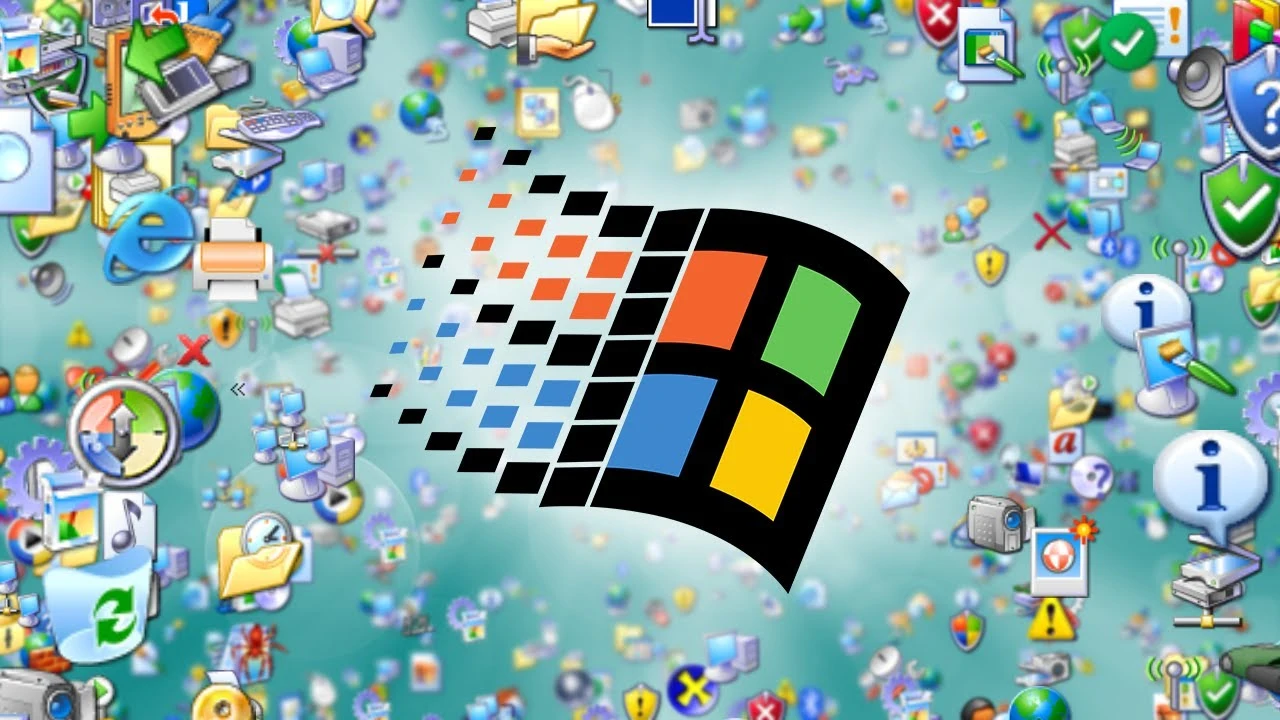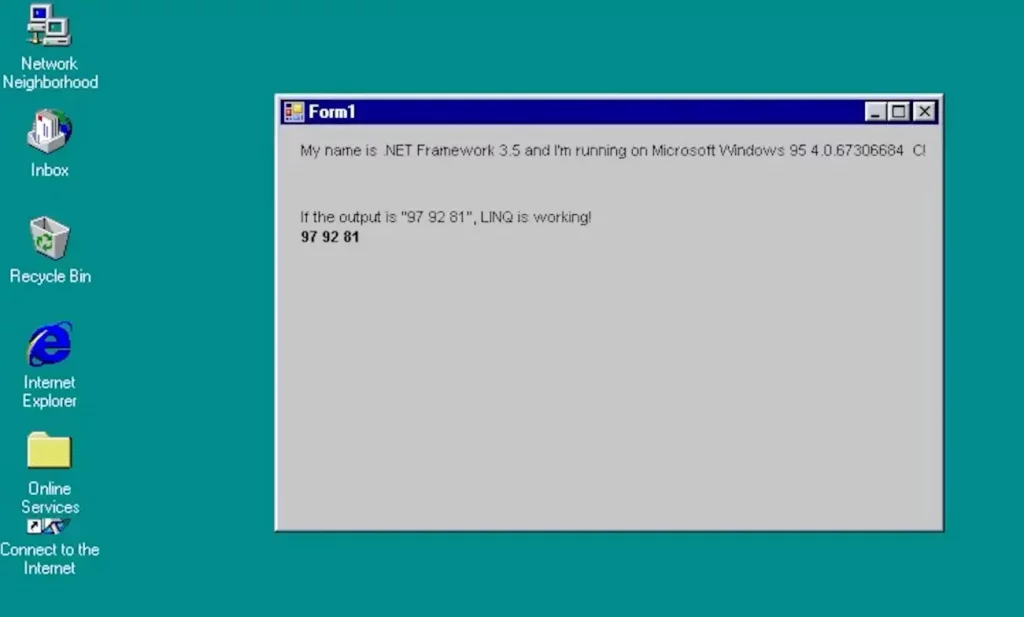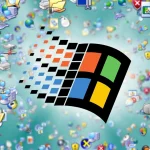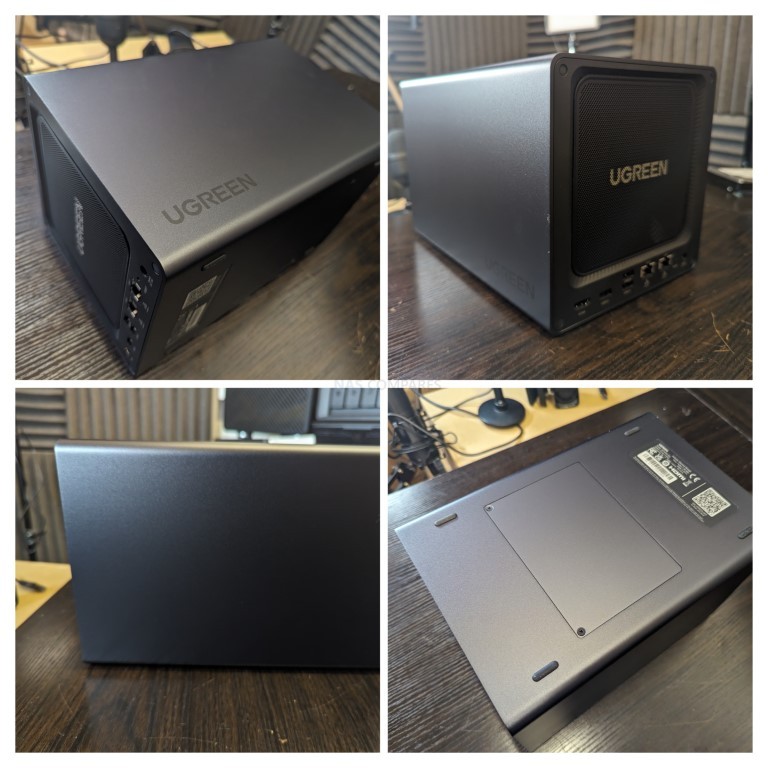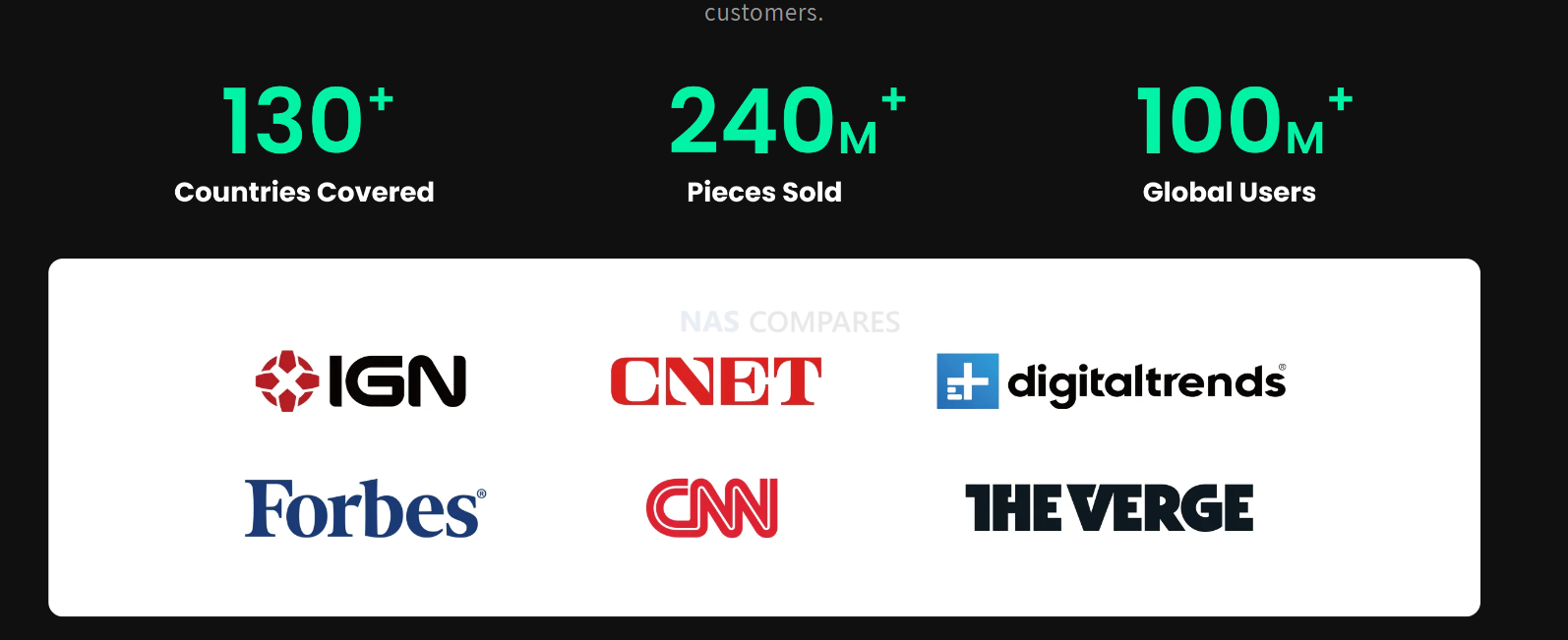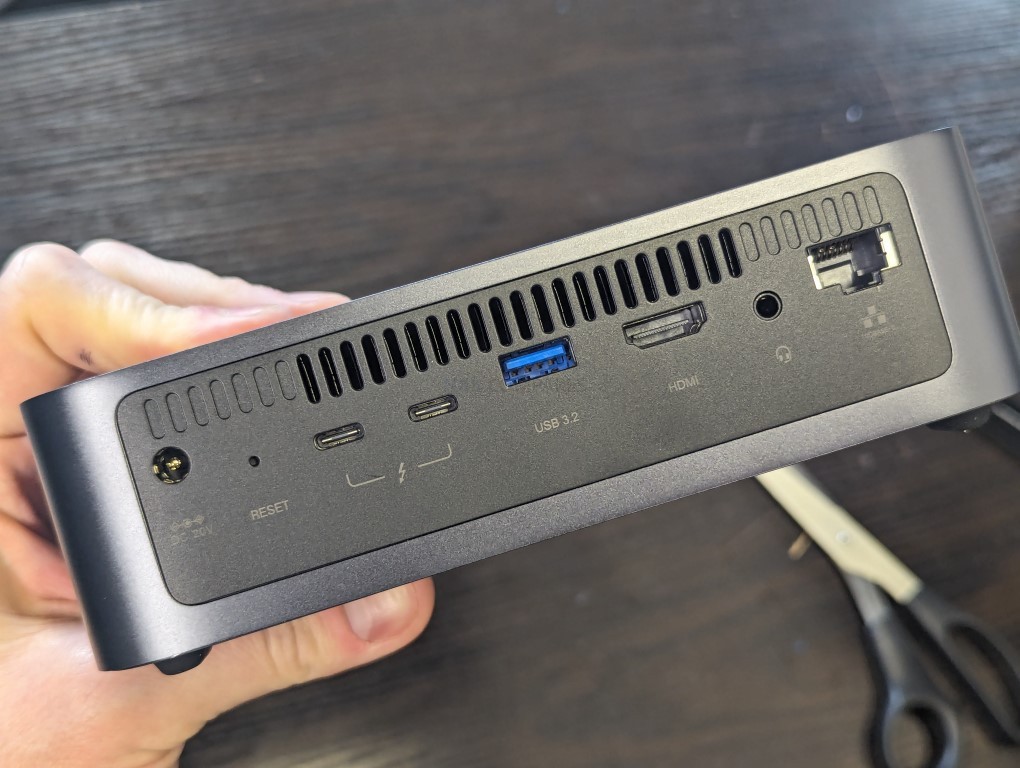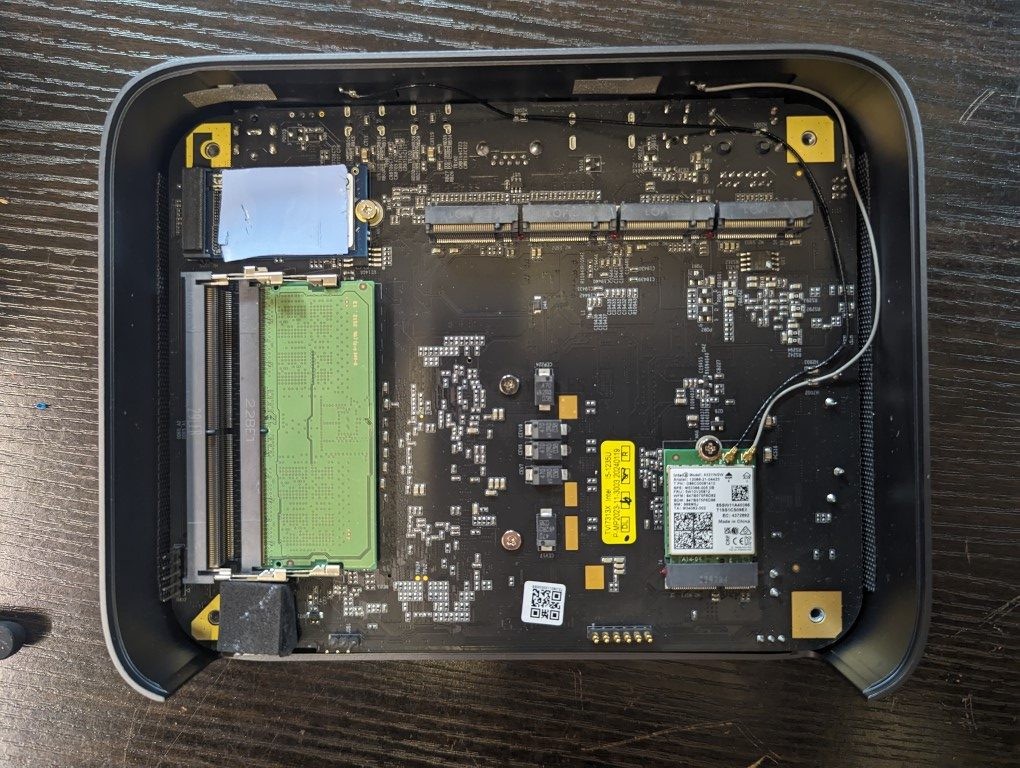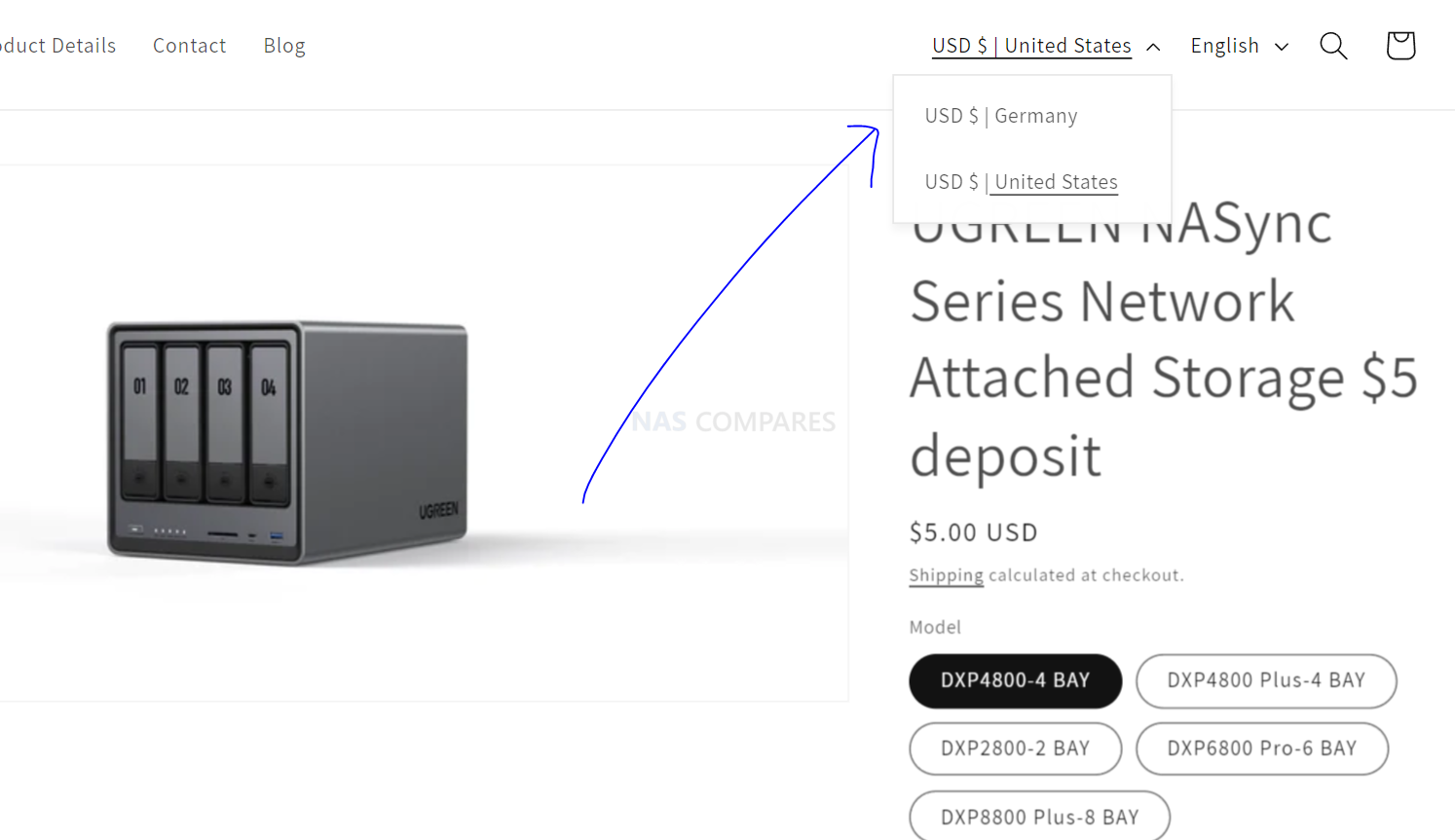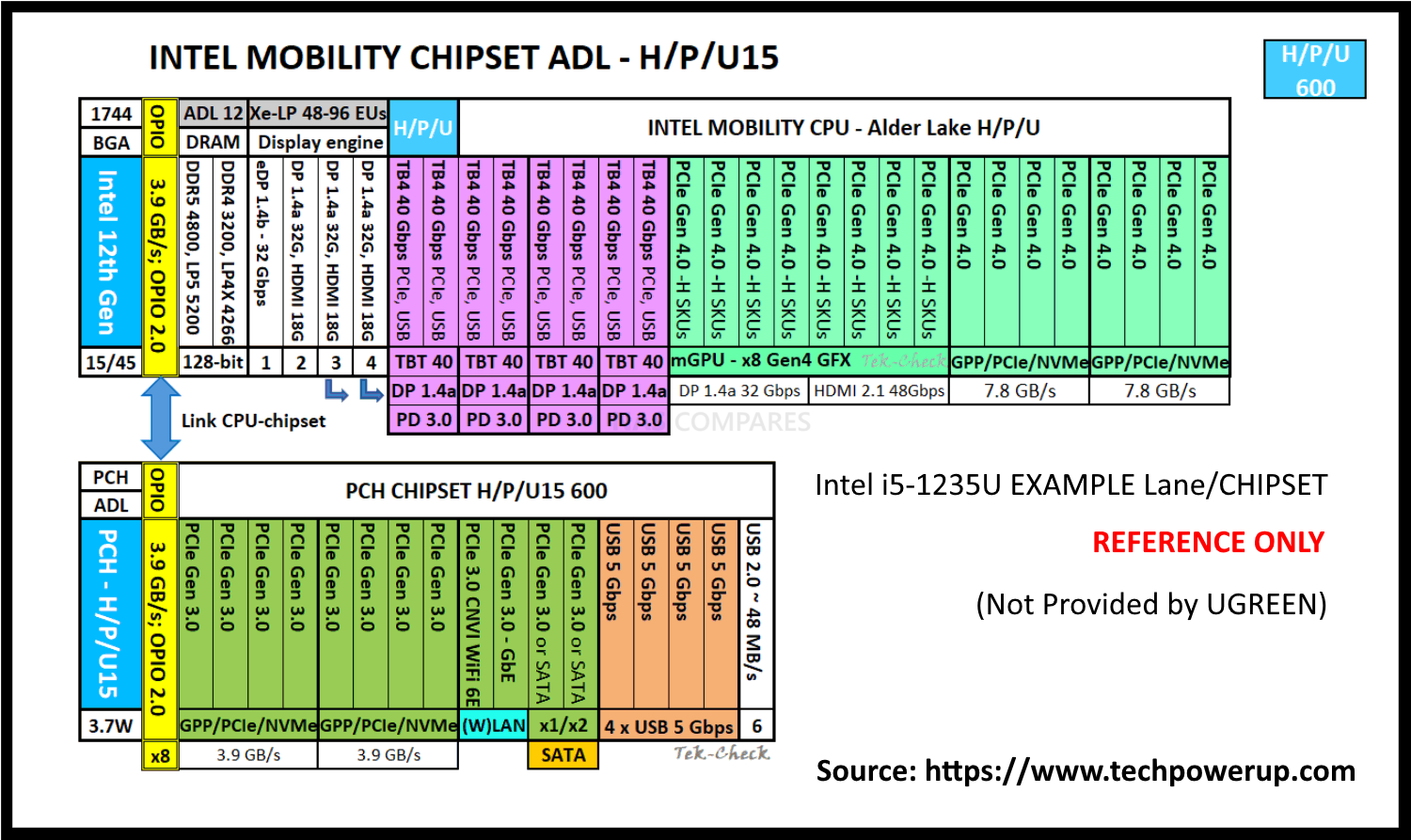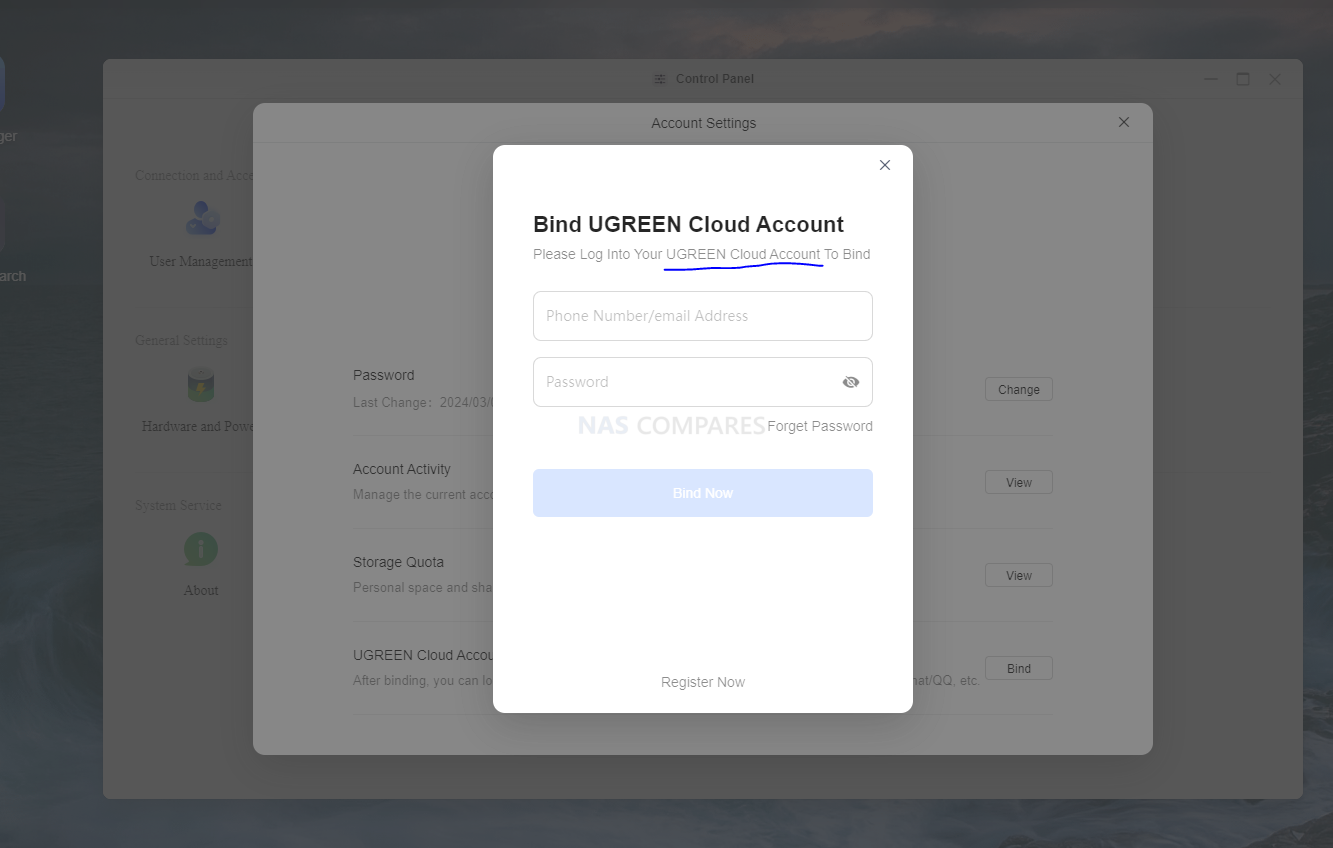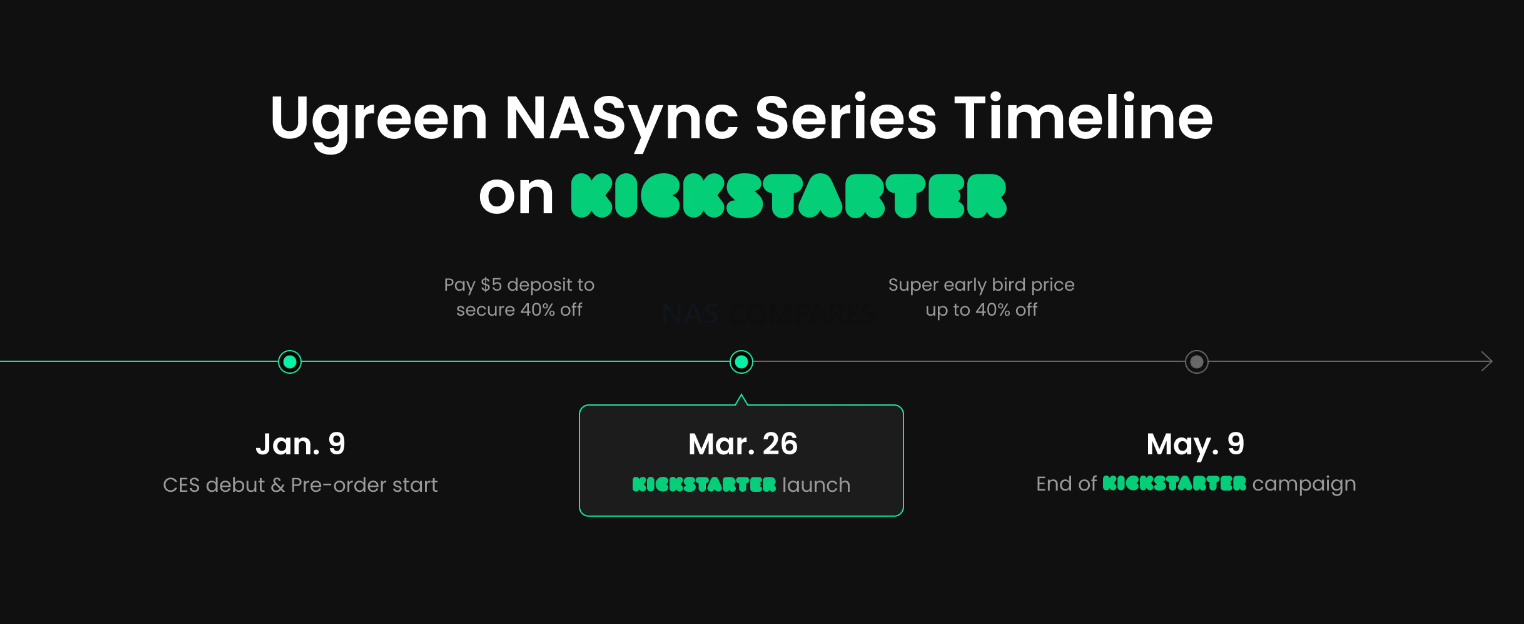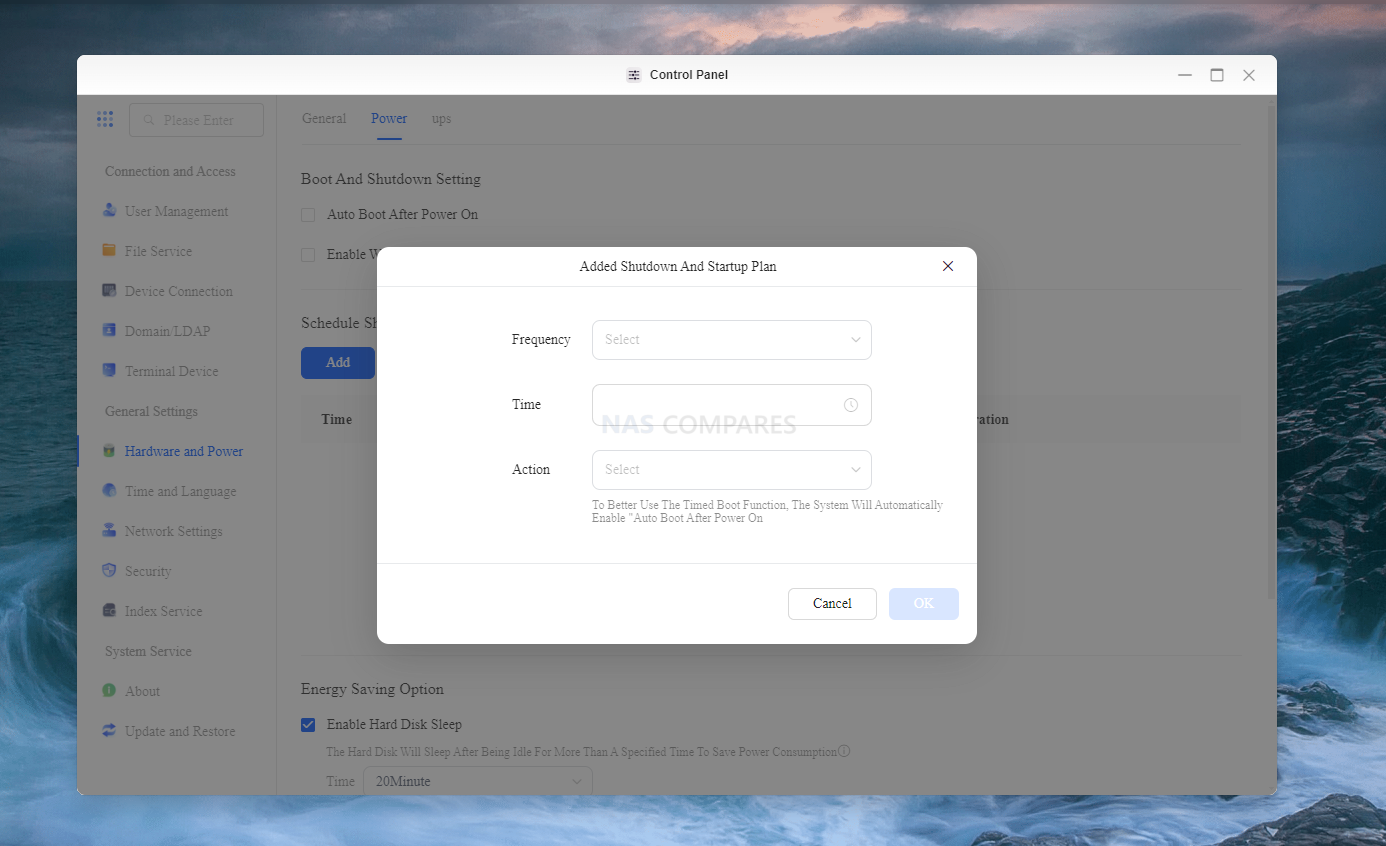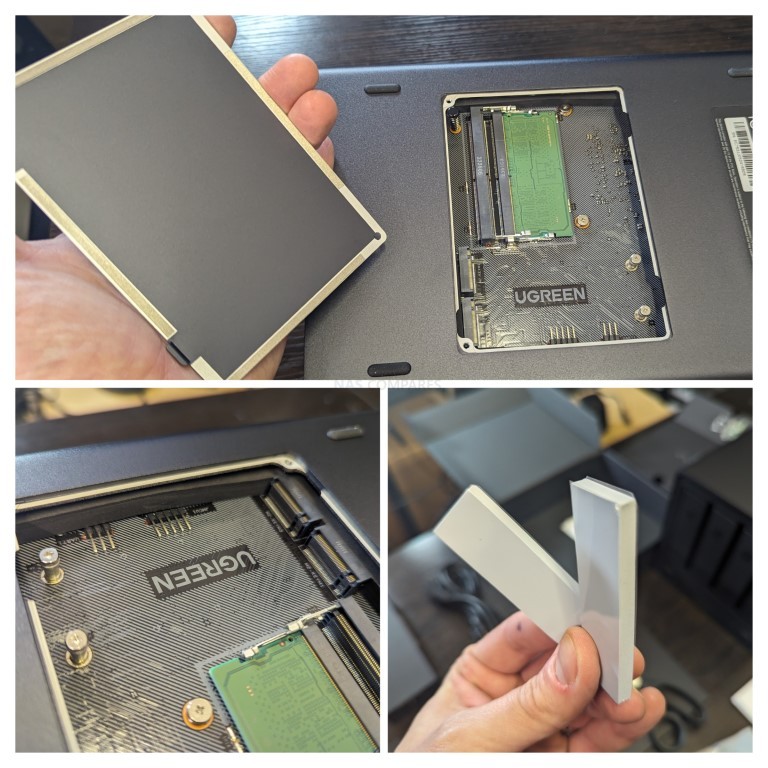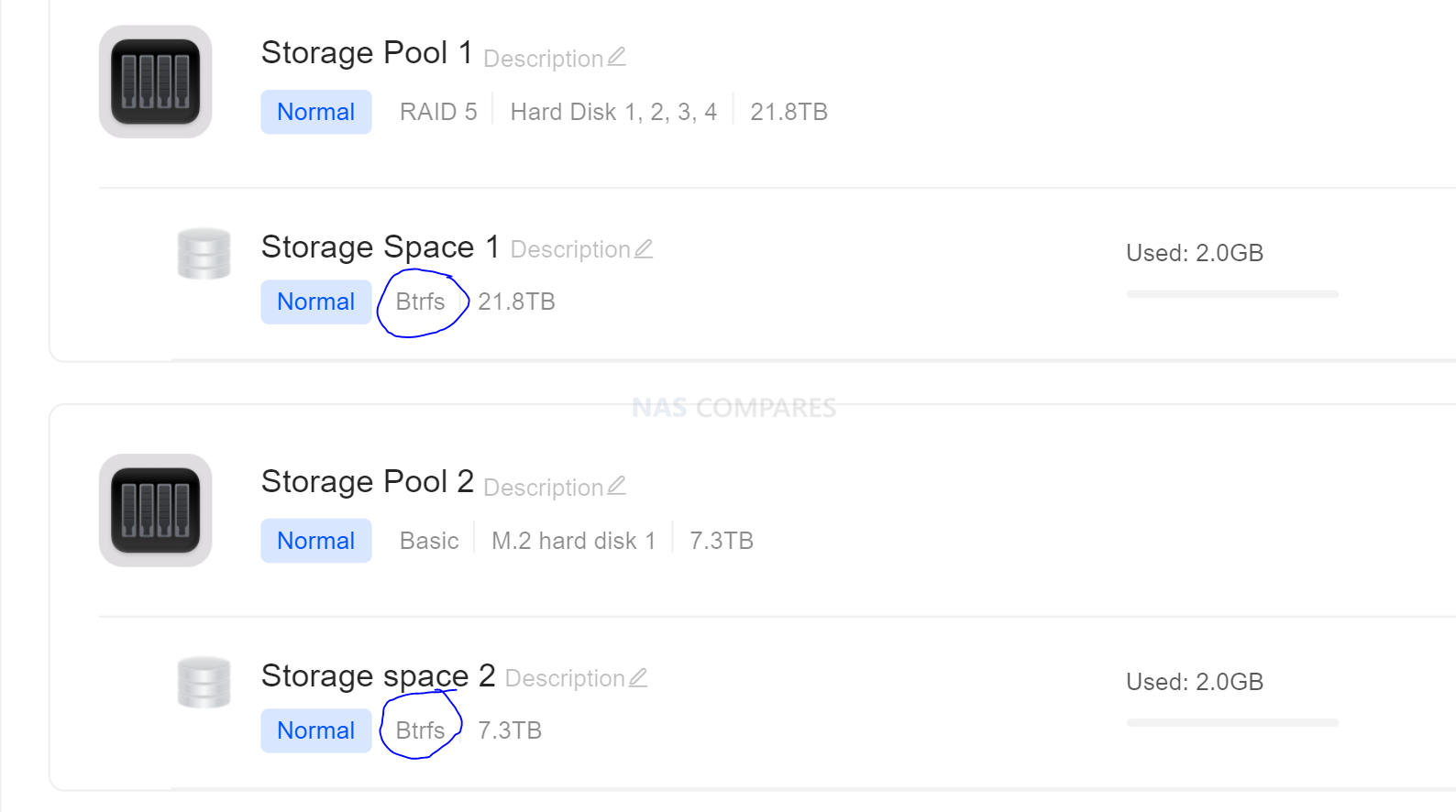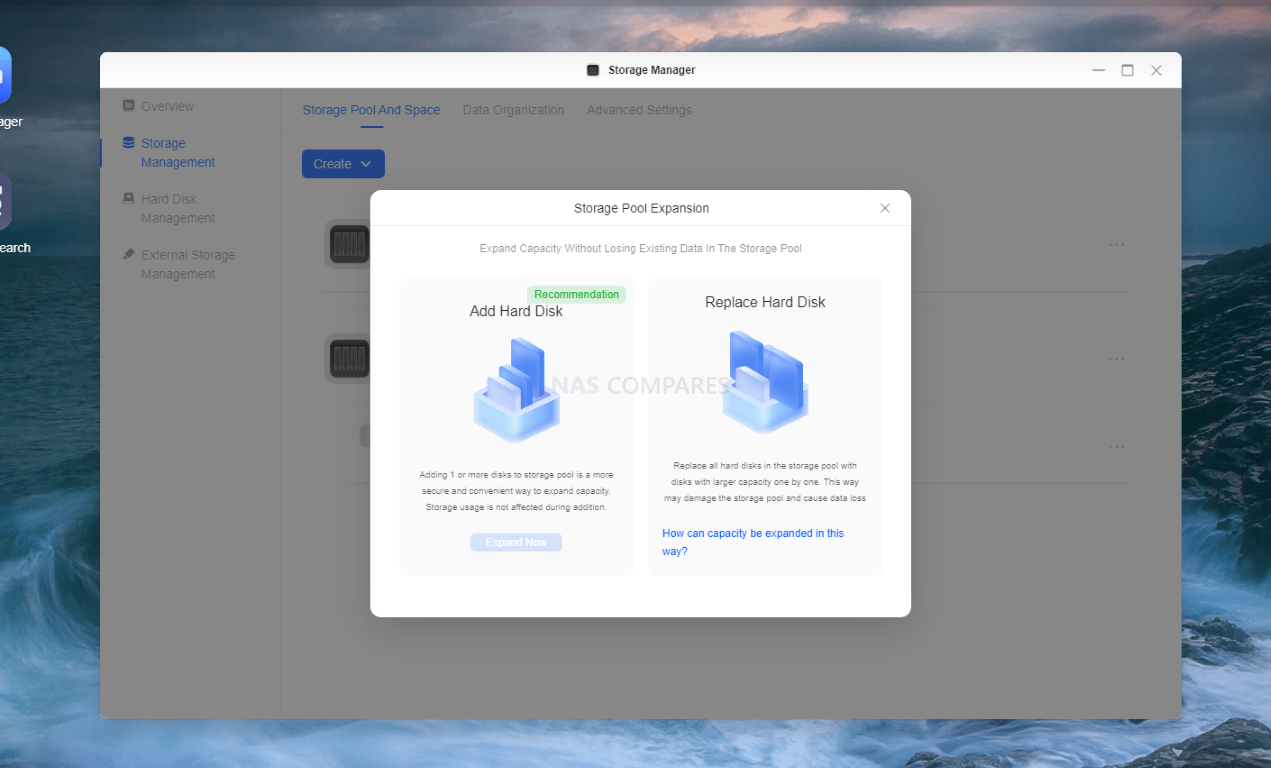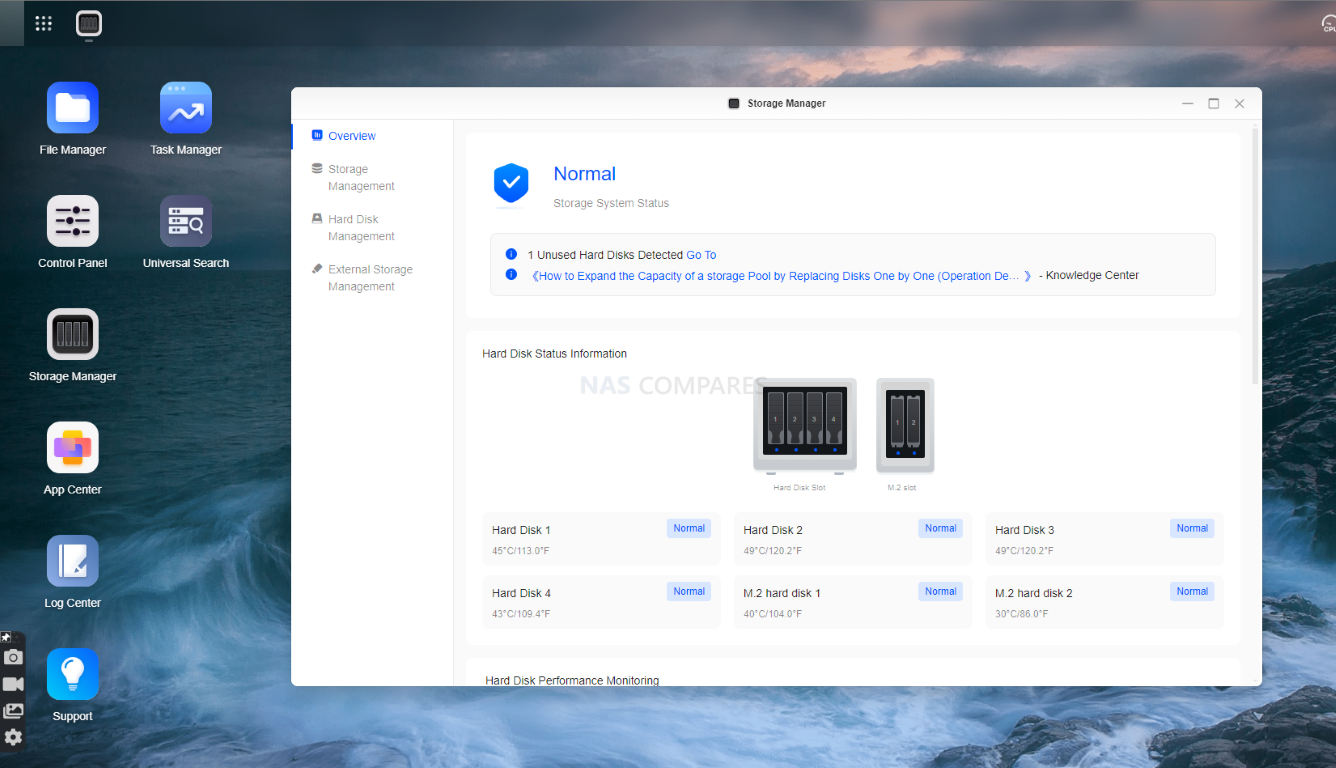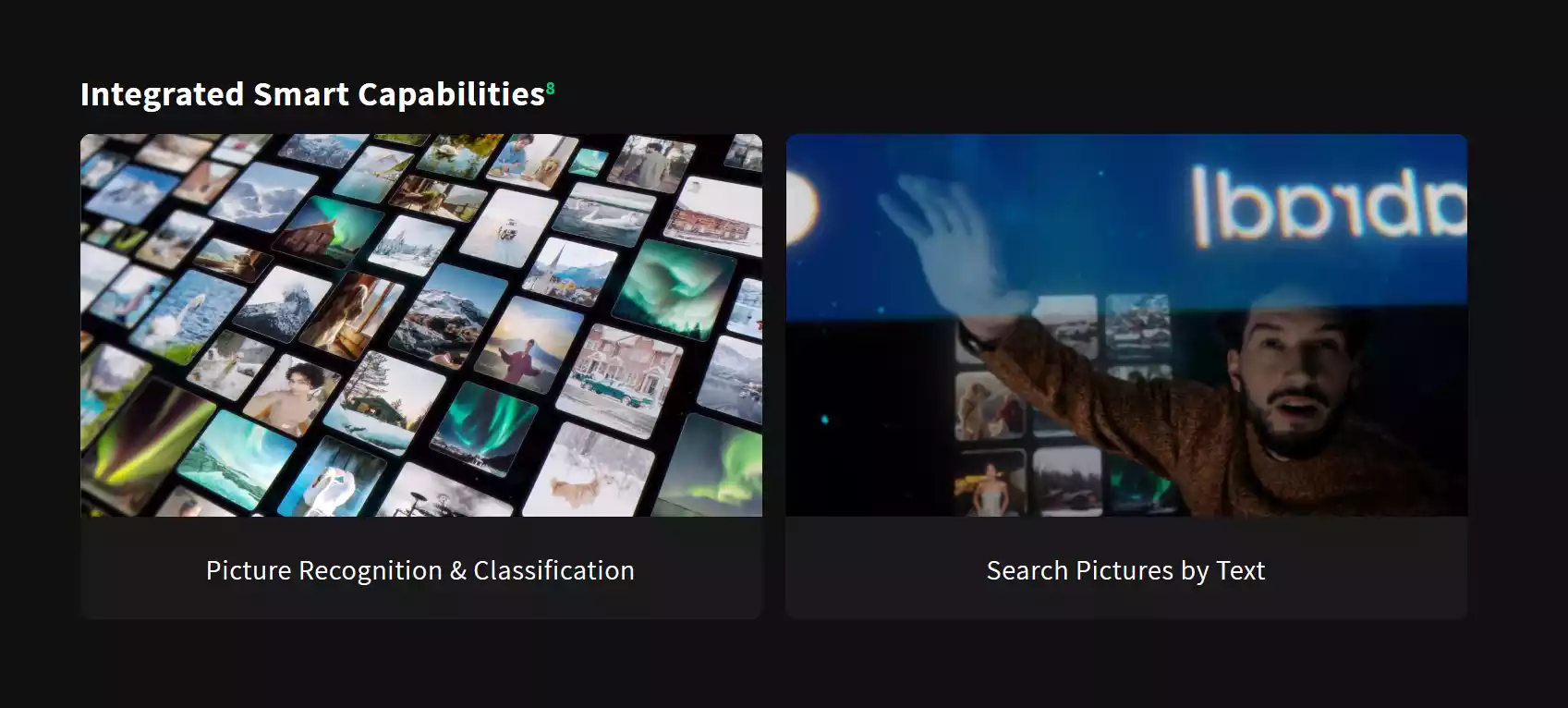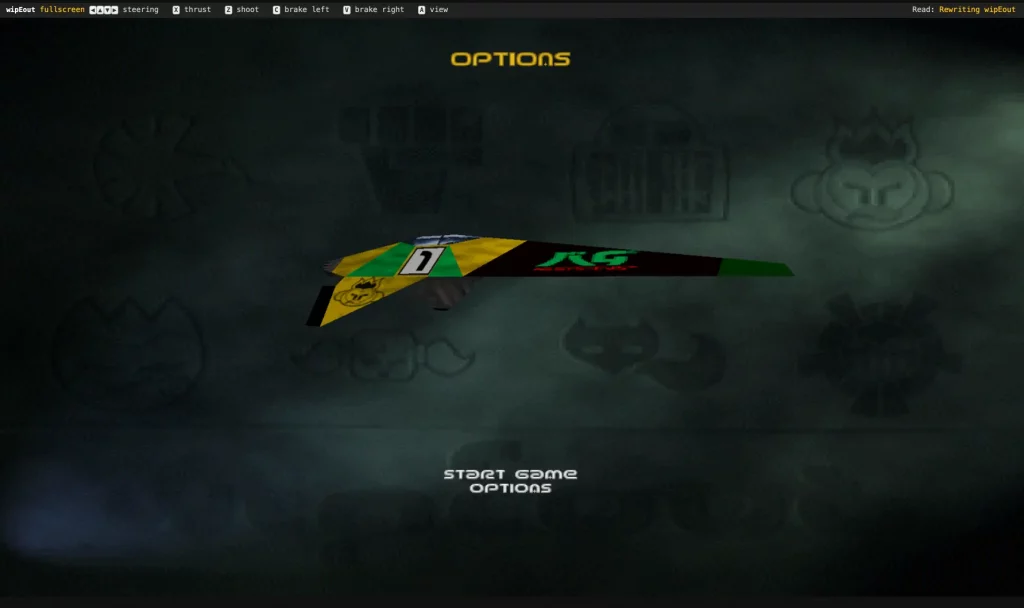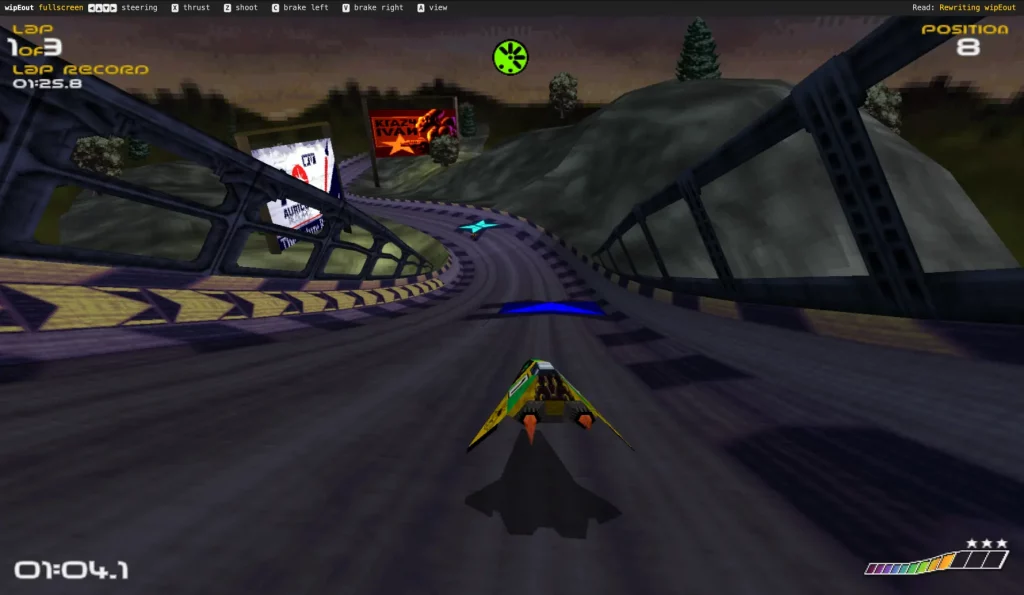Seagate 24TB Ironwolf Pro NAS Hard Drive Review
The Seagate Ironwolf Pro 24TB HDD Review
Seagate and their Ironwolf series of hard drives have fast become a mainstay of the NAS landscape in a relatively short time, considering their NAS HDD and eventual rebranding to Ironwolf in 2015/2016. In that time they have closed considerable ground on their biggest rival in this field, the WD Red series, and now although the brand first released Ironwolf Pro 20, 22 and now 24TB NAS Hard Drives in the last 18 months, they are now in the process of revising a number of these drives and introducing a new higher durability STX0000NT001 / STX0000NT001 series to join that existing the STX000NE001. These newer class of Prosumer/large-scale storage array NAS hard drives arrive with almost twice the workload rating, more than double the MTBF rating and still maintain the same high reported performance levels. All this said, why the sudden change? Perhaps facilitated by hardware shortages or due to the growing concerns of some users over larger capacities having the same workload rating of smaller capacities, leading to diminishing durability returns? Whatever the reason (more on that later), there is no denying that 24TB of storage in a single 3.5″ HDD casing is something to behold and today we are going to review this new massive drive from Seagate, benchmark it, test it with leading NAS brand Synology, discuss the differences with the existing Ironwolf Pro range and (hopefully) help you decide if it deserves your data? Let’s begin.
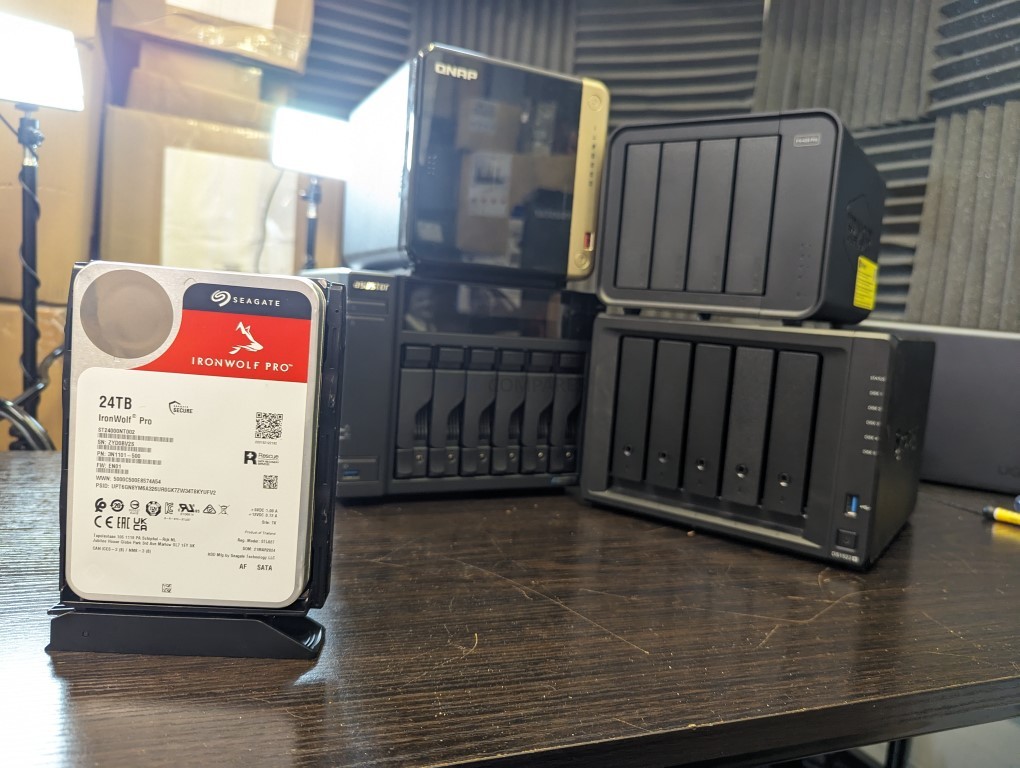
Seagate Ironwolf Pro 24TB Hard Drive Review – Quick Conclusion
There is no denying that Seagate certainly delivers on the prompted storage and performance that they have stated for the Ironwolf Pro 24TB NAS hard drive. This alongside fully tested and confirmed compatibility with Synology (though not by Synology themselves) devices means that you have a drive here that can turn any 4-Bay NAS into a staggering 96TB server in RAID 0 and 72TB RAID5 Storage data monster – let alone once you start thinking about rackmounts and hyperscale. The pricing of this 24TB is understandably high, but as always, when you start crunching down the ‘Price Per TB’, it ends up landing comfortably in the same region as other Pro class drives of a smaller capacity. As mentioned previously, I particularly appreciate that the workload discussion surrounding ‘Pro’ Class drives at 300TB/yr vs rapid HDD capacity growth is being addressed here with a 550TB/yr version to rival that of ‘Ent’ class drives – whatever the reason/motivation. With capacities getting higher and more ‘eggs being placed in baskets’, the durability of each individual drive in an array grows in importance, so the shift of these PRO class drives towards an ENTERPRISE class workload should be positively noted. The value of the Ironwolf Health Management tool is going to be something of debate and the inclusion of 3yrs data recovery services is a nice extra that (with any luck) few will need to use – but better to have them and not need them, than visa versa. As HDDs continue to increase in scale and Seagate (among other brands) continues to outline their plans to hit 50TB (so, halfway there with this one!) by the end of the decade, the Seagate Ironwolf Pro ST2400NT002 is another good example of an HDD that finds a sweet spot between price, durability and value. Just be aware that this is a drive designed for large-scale use and that means high operational noise and higher than typical power use than non-Pro and smaller cap drives!


8.6
 Very Good Price Point vs WD Red/Red Pro
Very Good Price Point vs WD Red/Red Pro Data Recovery Services Included (3yrs)
Data Recovery Services Included (3yrs) 550TB/yr Workload & 2.5M MTBF
550TB/yr Workload & 2.5M MTBF 285MB/s Transfer Speeds
285MB/s Transfer Speeds Ironwolf Health Management Inc.
Ironwolf Health Management Inc. Seagate Secure Onboard
Seagate Secure Onboard Consistent Performance
Consistent Performance
 Noisy!!!
Noisy!!! Definitely Cannot have Just One
Definitely Cannot have Just One Pricing and Model ID Confusion
Pricing and Model ID Confusion Higher Standby/Idle Power Use
Higher Standby/Idle Power Use Tipping point vs SDDs
Tipping point vs SDDs
Where to Buy a Product





![]()
![]()

VISIT RETAILER ➤






![]()
![]()

VISIT RETAILER ➤
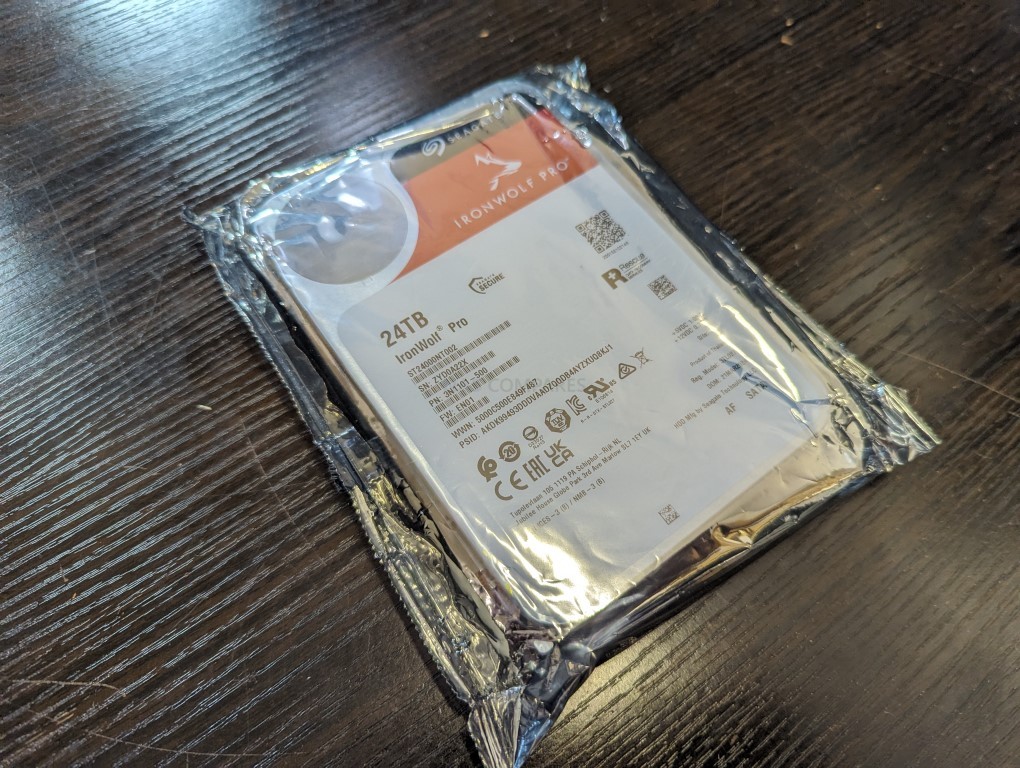
Seagate Ironwolf Pro 24TB Hard Drive Review – Design
The design of the Seagate Ironwolf Pro 24TB HDD remains largely unchanged in appearance compared with the most recent high-capacity releases at 24TB and 22TB. The 3.5″ casing is helium sealed and the new NT class of drives arrive with a change in the labelling to differentiate them from the NE Ironwolf Pro series. Perhaps this differentiation is the separate them for use in 24+ Bay servers (given the oddly open-ended ‘unlimited bay’ support on the spec sheets vs the ‘upto 24-Bays of the Ironwolf Pro till now). Typically NAS/SAN system that feature 24x and higher storage bays would have been urged to opt for the EXOS series (available in both SAS and SATA). Perhaps this is a means to open up and bracket the Hyper-Scale and Data Center tier up, as more and more medium-large business setup single/paired Rackmounts outside of the large-sclae cabinet settings of the past? It’s hard to say, as otherwise, what problem is a newer and more durable Ironwolf Pro drive solving?

One argument might be the growing question of workload ratings on HDDs vs Growing Capacities and how they are starting to result in reduced margins of durability. The general rule of thumb when it has come to Hard drives for 24×7 server deployment is:
- Standard Class Server Drives (so, upto 8 Bays of storage, small-medium Business deployment) is 180TB workload a year over the 3yr warranty
- Large Scale Server Drives (above 8 Bays and upto 24 Bays for Higher-end business and large-scale deployment) at 300TB workload per year over the 5yr Warranty
- Enterprise/Hyperscale Server Drives (i.e Data Center, with theoretically limitless Bay numbers, factoring expansions and growth) at 550TB workload per year over the 5yr Warranty
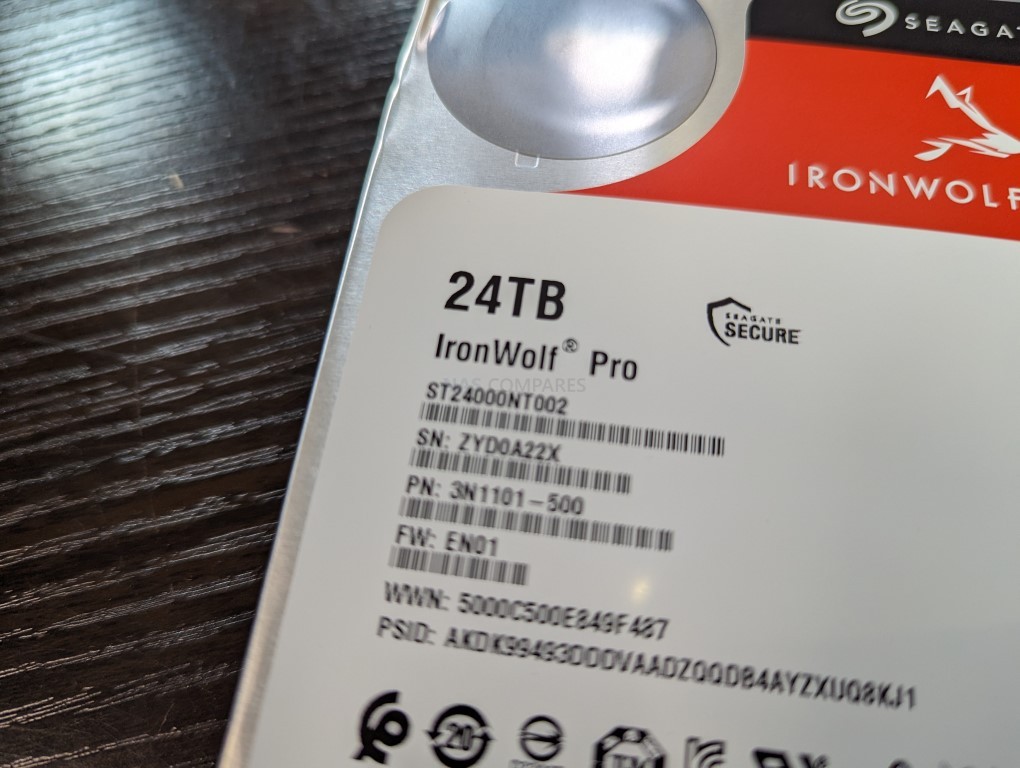
Now the Seagate Ironwolf Pro 24TB is branded as a ‘Pro’ class drive (the middle one, above), however it arrives with a 550TB Workload rating, putting it well into the Enterprise bracket and treading on the toes of Seagates EXOS series – though lacking the SAS and Encryption options of EXOS options. However, the general rules of 180/300/550TB respective workloads on each tier begin to fall down a little when you factor that a 1TB drive that has a 300TB workload at 210MB/s performance and a 24TB that is also at 300TB workload annually, but 285MB/s max transfer will not only hit that workload limit quicker – but there is also the question of how this translates over time vs the available storage space and writes over time! Therefore the newer gen Seagate Ironwolf Pro ST2000NT001 Hard Drive arriving with 550TB/yr (alongside NT versions of many of the other lower capacities) does elevate this point somewhat for those users in between the Large Scale and Hyperscale/data center.
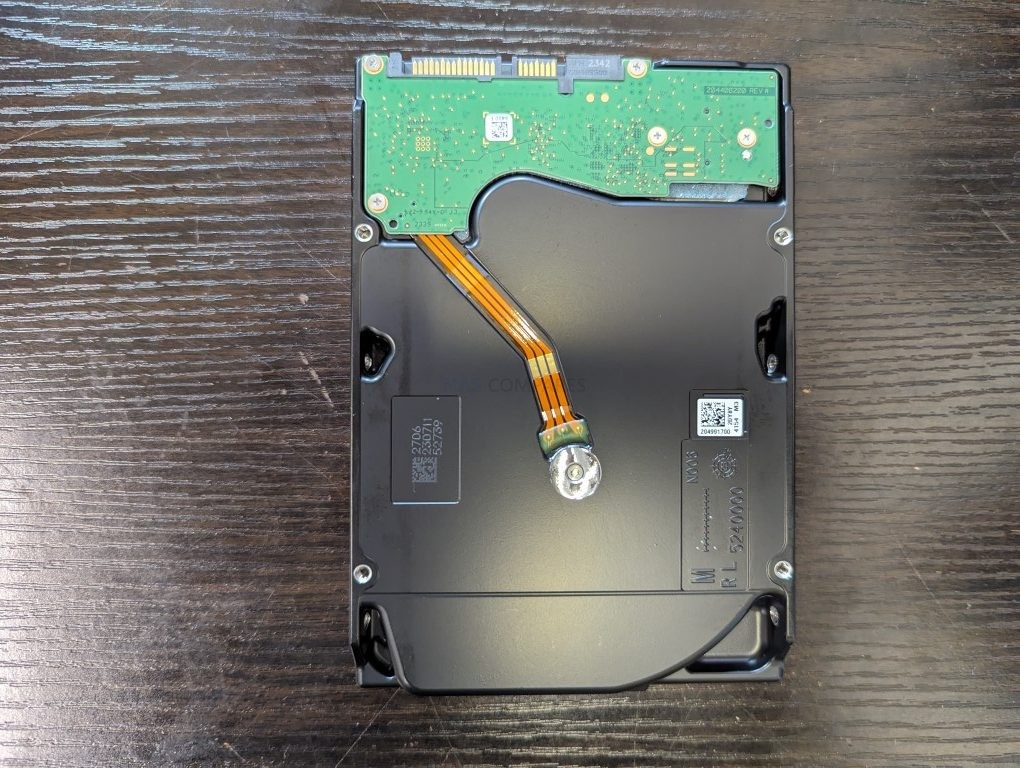
The 24TB in the ST2400NT001=2 is spread over 10 platters of 2.4TB each, made possible via the drive being helium sealed. This reduces potential internal drag and friction between platters, maintains the balance and allows much thinner platters to be used. Spinning at 7200RPM, the platters feature dual-plane balancing (known as AgileArray) also time-limited error recovery (TLER), which ensures the drive reading head isn’t delayed in intermittent read errors and can restart quickly to increase access when needed.
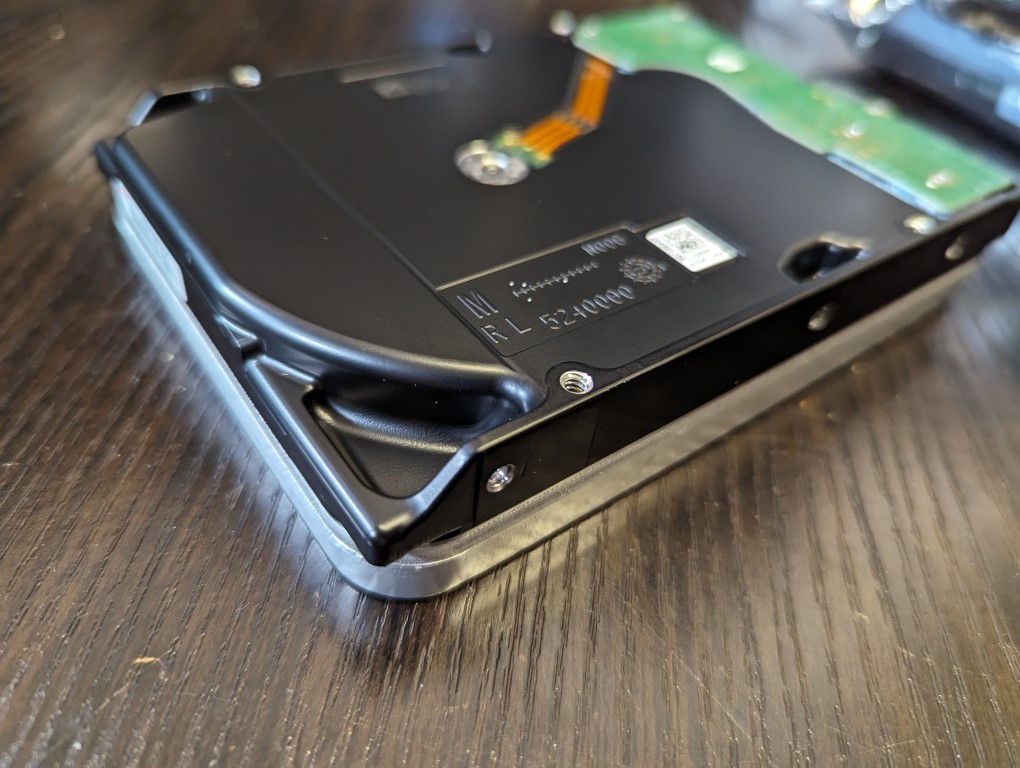
The 10 platters spinning at 7200RPM are also accompanied by 256MB of caching on board, which really surprised me, giving most of Seagate’s competitors have hit the 512MB cache level at this capacity tier. Having half the chance of its rivals does not seem to diminish both the performance or the sustained performance either.
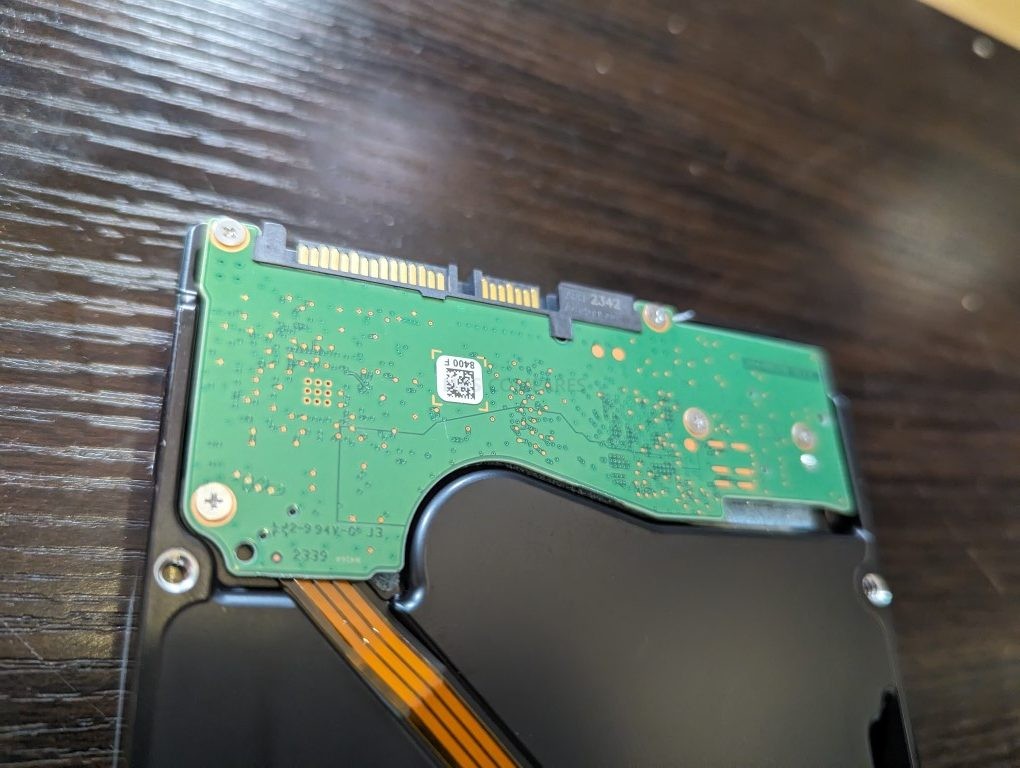
As mentioned, the Seagate Ironwolf Pro HDD series only arrives in SATA. Although I can understand that Segaate does not want to overlap TOO much with their EXOS range that they already have done, there are an increasing number of SAS NAS solutions arriving on the market (with both Synology and QNAP both increasing their range of solutions in this direction noticeably for their 2022/2023 generations). Yes, users could just go for a suitable SAS EXOS option, but then they lose out on the Rescue Data Recovery services and Ironwolf Health management on the drive.
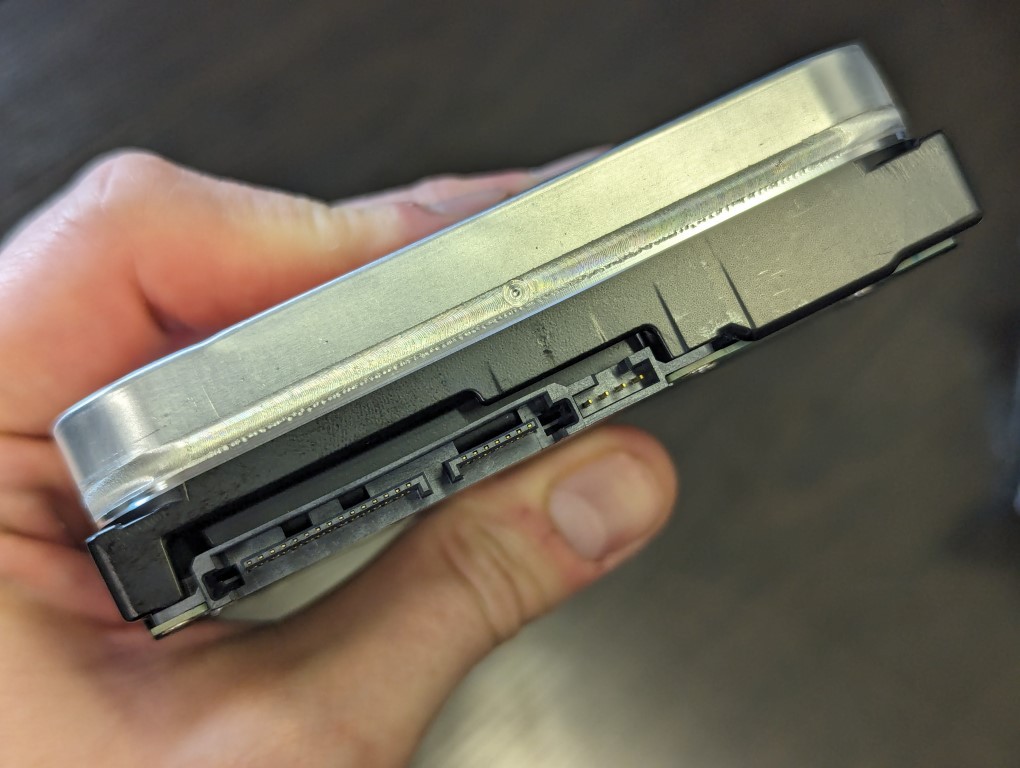
Overall, any improvements or changes in the build/construction of the Seagate Ironwolf Pro 24TB ST2400NT002 HDD over the rest of the range and/or the previous NE version are all internal. We have to take Seagate at their word on the effective doubling of the durability rating, but given their pedigree in the EXOS enterprise series, I have little doubt in this. Although the Ironwolf Pro 24TB is not the only NAS drive in the market right now that is breaking the 24 Terabyte level, it does arrive with a couple of things that many others don’t that we should cover – the included Data Recovery services and the Ironwolf Health Management tool for NAS for a start. But MOST IMPORTANTLY, the Seagate IW Pro 24TB is CMR (conventional Magnetic recording) and not SMR (Shingled Magnetic Recording – that latter of which is what the bulk of other NAS brands offer drives at this scale in. However, larger scale storage users will always opt for CMR drives and Seagate (unlike WD) have done a fantastic job of ensuring all their NAS drive series are CMR.
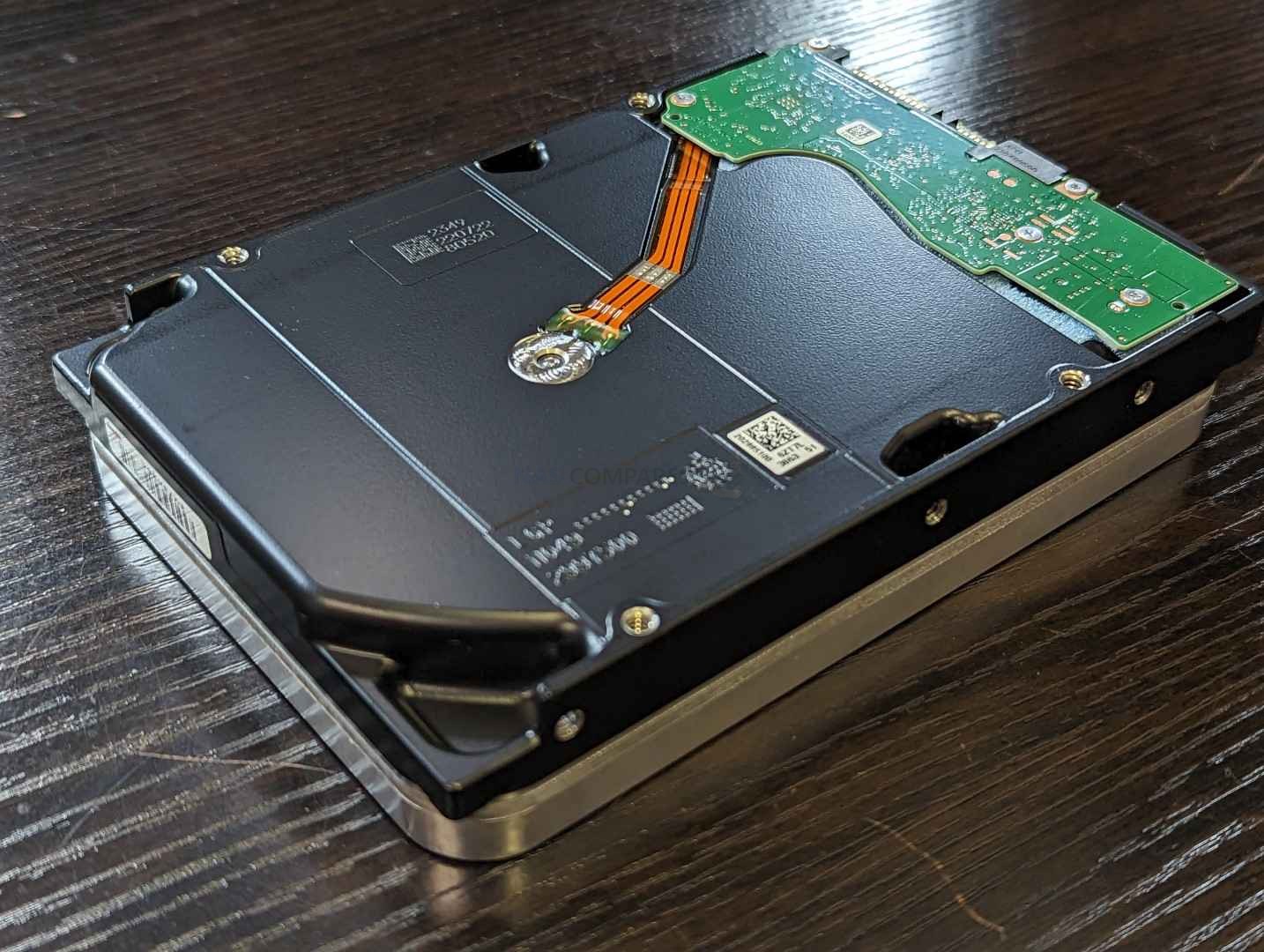
Is Seagate Ironwolf Health Management and Rescue Recovery Services Worth Caring About?
For those that are not aware, the Seagate Rescue+ package is a data recovery service that is included with your Ironwolf and Ironwolf Pro drives that, alongside your 3/5-year warranty, includes an additional 3 years of data recovery services. What that means is that if your drive fails through no fault of your own within reason (so, no, not smashing it with a hammer), you can send the drive off to the Seagate recovery labs and they will try to get that data back. From accidental deletion, all the way through to mechanical and forensic level recovery, this is an impressive inclusion! You should still factor other safety nets in your architecture (backups, UPS, RAID, etc) but given the cost of data recovery services (costing anything from hundreds to thousands of pounds), this is a very, VERY useful inclusion when you need it. This plus an already normally lower price point than Pro series drives in the WD Red series means that the Seagate Ironwolf hard drives still manage to be the better value choice for alot of users, especially when including the Rescue recovery included. They are also the only 3rd party NAS hard drive brand that has a tool to monitor drive health available on practically ALL the NAS software GUIs in the market, in Seagate Ironwolf Health Management. Here is part one of a two-part video series on the NASComapres YouTube channel were we showed the Seagate Rescue Recovery service (arguably, in a very extreme fashion!):
You can find out more on the Rescue service and its Pros/Cons in the video below. Otherwise there is another video detailing a guide on what to expect from data recovery costs/fees etc in a video from 2021:
Seagate Ironwolf Pro 24TB Hard Drive Review – Testing
Testing the Seagate Ironwolf Pro 24TB is going to be performed across multiple methods, but still rather unconventional. This drive is designed for deployment in large # Bay servers, but although I have several NAS in the studio that could accommodate this frequency of drives, I do not have sufficient Seagate Ironwolf Pro 24TB units. Therefore the testing I have conducted are all examples of single-drive performance. These will include several PC testing sessions using popular and recommended storage testing applications and two NAS tests involving Synology and QNAP.
- Windows 10 Pro Desktop System
- Intel i5 11400 Rocket Lake – 6-Core 2.6/4.4Ghz
- 16GB DDR4 2666MHz Memory
- Intel B560M mATX Motherboard
- OS Storage, Seagate Firecuda 120 SSD
- Test Hard Drive connected to a Sabrent USB 3.2 Gen 2 10Gb/s external dock
- Synology test was conducted on a DS923+ NAS using the system’s own benchmarking tool
These last tests are important as not only is the Seagate Ironwolf Pro 24TB HDD designed for NAS use, but also at the time of writing neither brand lists this hard drive as compatible. There is more to this though that I will touch on later.
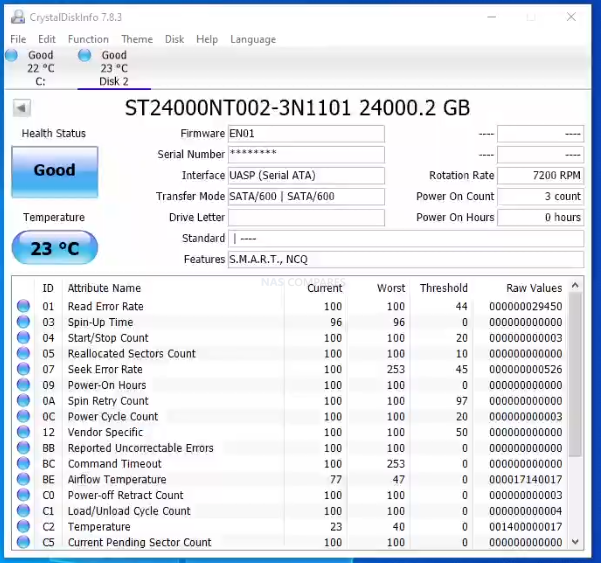
The first test involved using CrystalDisk. I performed tests on 1GB, 4GB and 16GB test files, as well as mixed 70/30% R/W. The results were consistent and largely lived up to Seagate’s claims here.
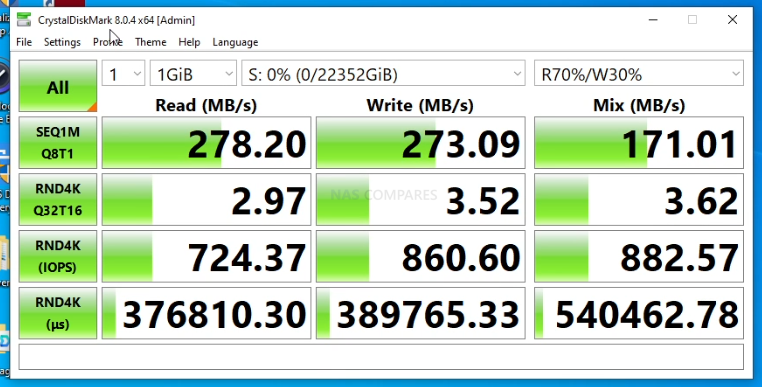 |
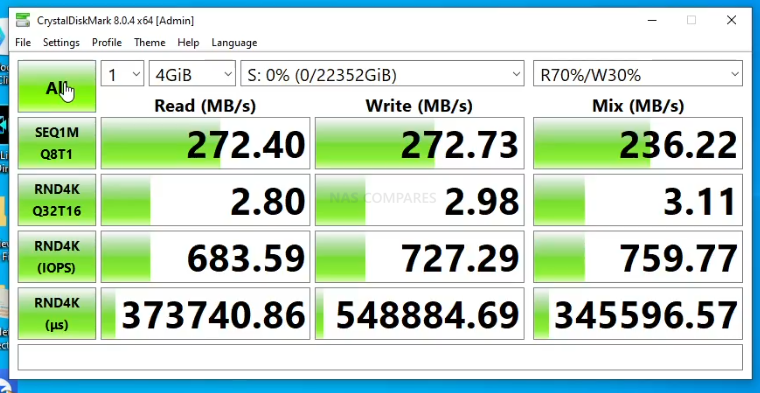 |
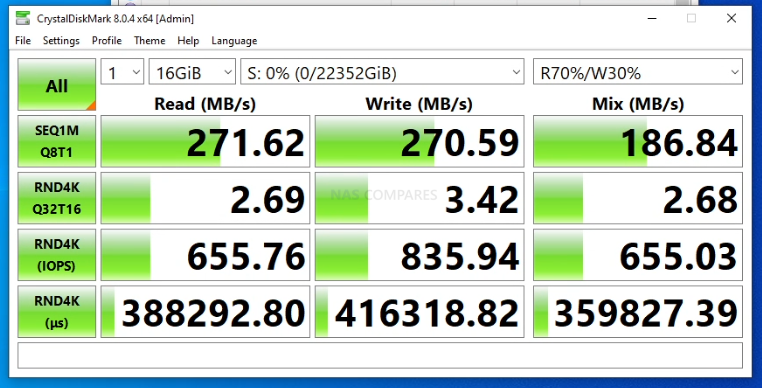 |
|
The next test used ATTO disk benchmark and this one used a 256MB, 1GB and 4GB test file in the same windows PC test environment. However, I also included the IOPS. The random 4K operations of a hard drive will typically be hugely dwarfed by those of SSDs, but enterprise HDDs and pro series drives still tend to rate noticeably higher than domestic HDD and standard-class NAS HDDs on this score.
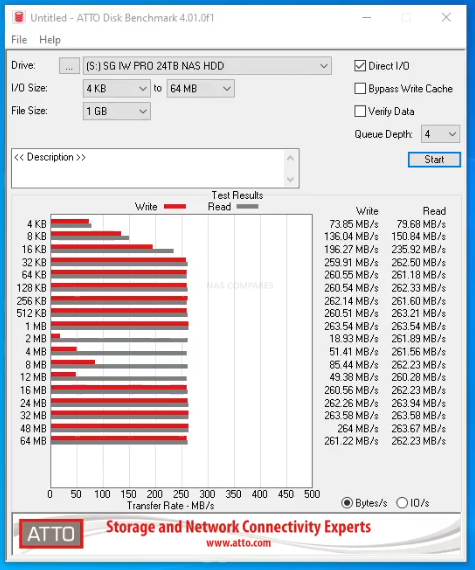 |
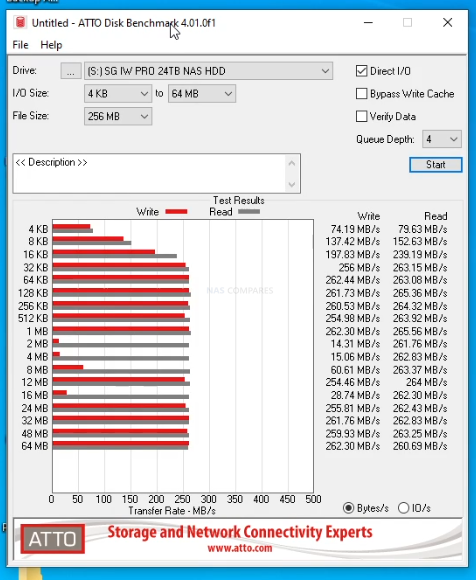 |
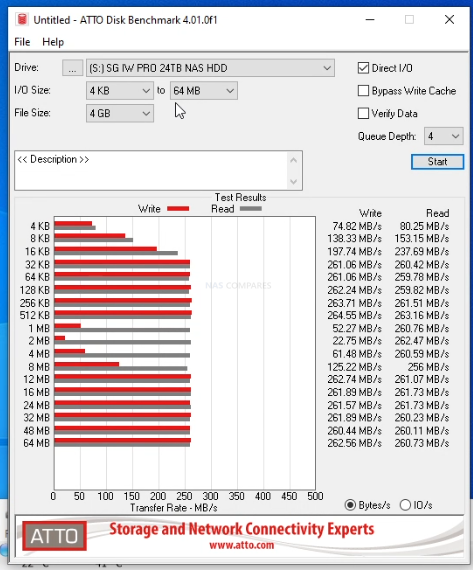 |
|
In order to conduct a windows performance test, I copied 20GB of mixed files over to the drive as a separate disk. The result was consistent performance and the transfer, averaging at 205MB/s on the windows transfer overall and peaking at 260MB/s. Although this is lower than the transfer rates stated by Seagate and in the synthetic tests above, this is perfectly understandable when dealing with this high volume of small/differing date, compared with the largely Sequential Data tests stated elsewhere.
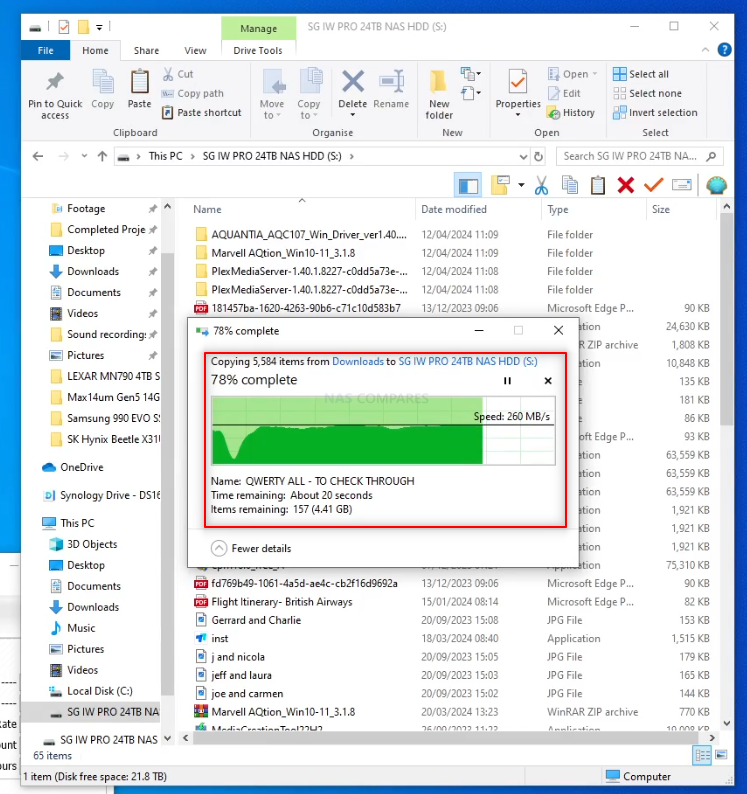
20GB Windows Transfer
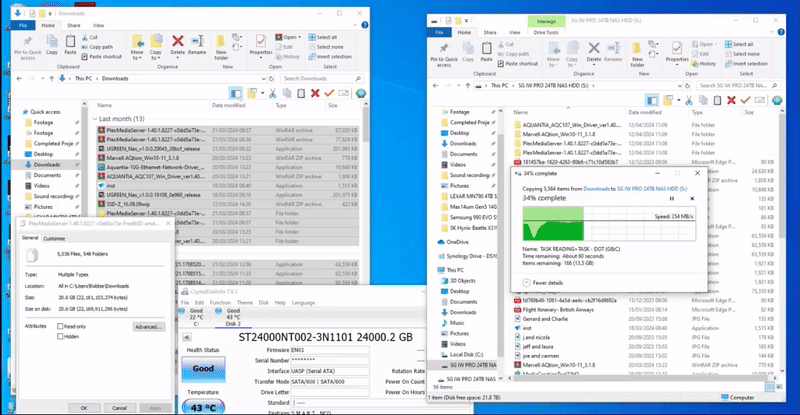
Synology NAS Testing with the Seagate Ironwolf Pro 24TB Hard Drive
Now, before I move on to the NAS testing. It is worth highlighting a couple of important factors with regard to the Seagate Ironwolf Pro 24TB and the support available from each NAS brand I am focusing on for the testing. Now, Synology is the ONLY NAS brand in the market that also has its own first-party HDDs available to users too. These are Originally Toshiba Enterprise-grade produced hard disks that have had a Synology-specific firmware applied to them. Now, why is this relevant? Well, because some larger-scale Synology products in 2021 onwards do not list other 3rd Party HDDs as compatible. Even then, if you look up some of the older 2020 released NAS drives currently in the market (such as the DS920+ for example), they DO list HDDs from the likes of Seagate Ironwolf (and their EXOS and Skyhawk series) BUT they do not list drives larger than 18TB at the time of writing. This is an odd stance by the brand, when larger-scale 24TB and 22TB hard drives are available in the market and designed for NAS.
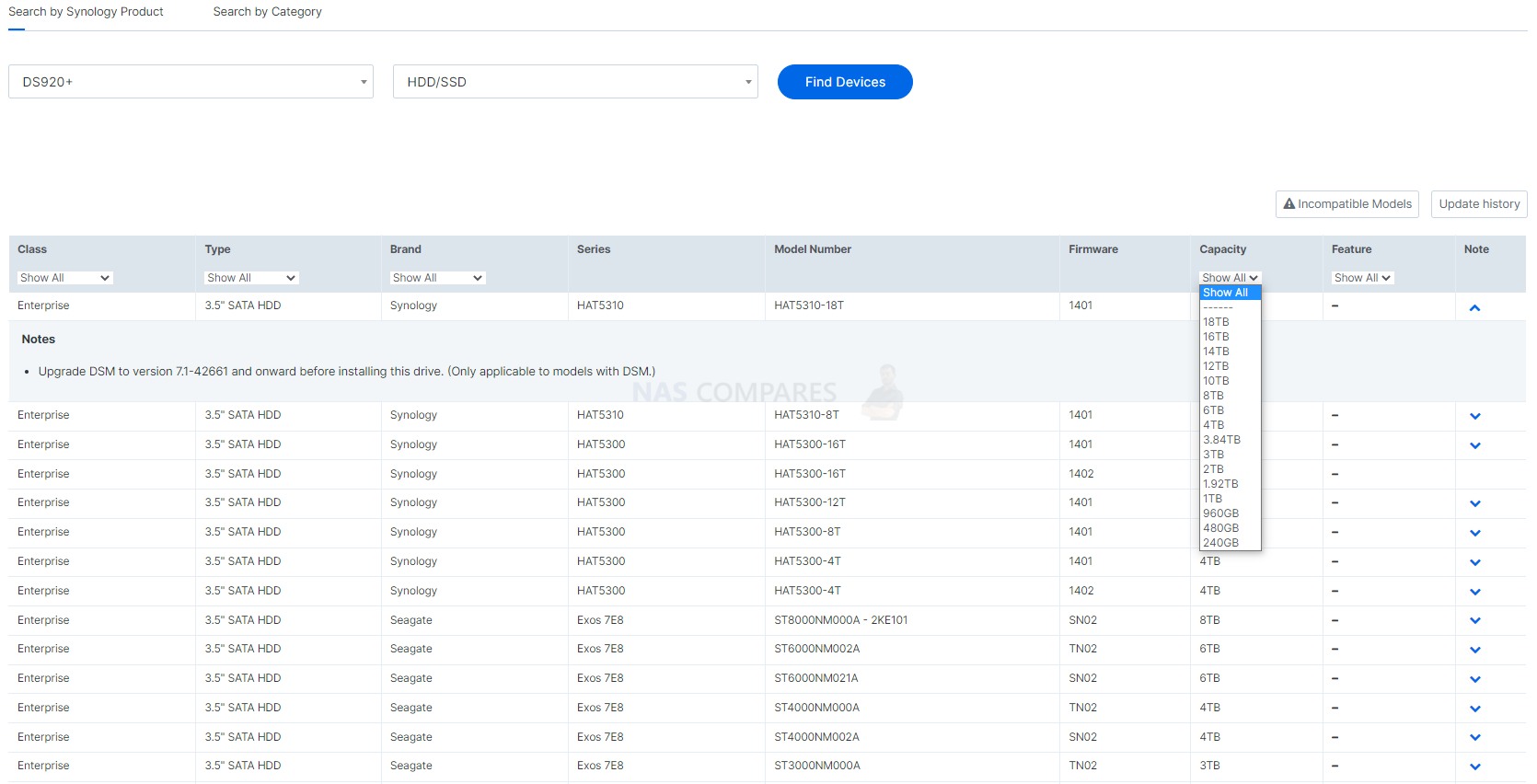
If you install an HDD or SSD inside a Synology system with the latest version of their software platform DSM, but the HDD in question is not on the compatibility list, you are greeted by a message that will detail that the drive is not recommended in the storage manager.
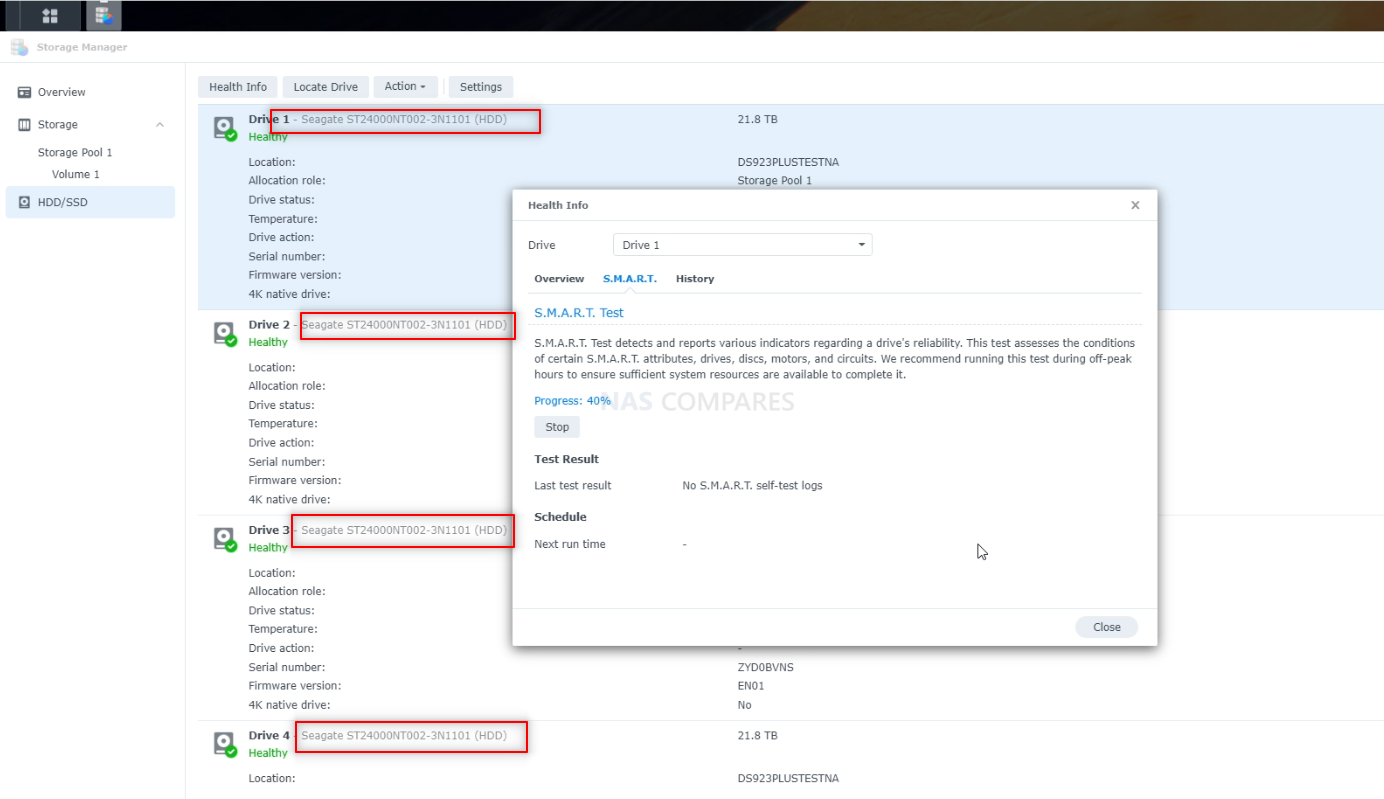
You can still use the HDD for Storage Pools, Volumes, Hot-spares, etc, but it is an oddly jarring message for some. Of course, this is the current compatibility of this HDD at the time of writing and may well change in the future as further HDD capacities arrive and additional compatibility testing takes place.
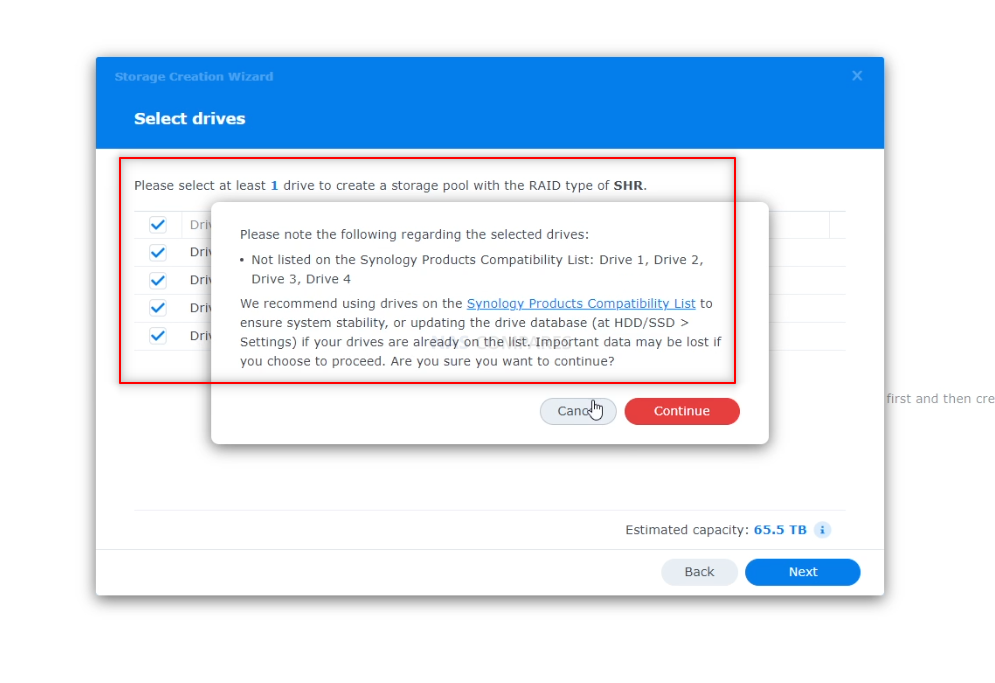
Nevertheless, you can still push through this warning and proceed to test the performance of the Seagate Ironwolf Pro 24TB HDD from within the Synology Storage Manager. Here are the results.
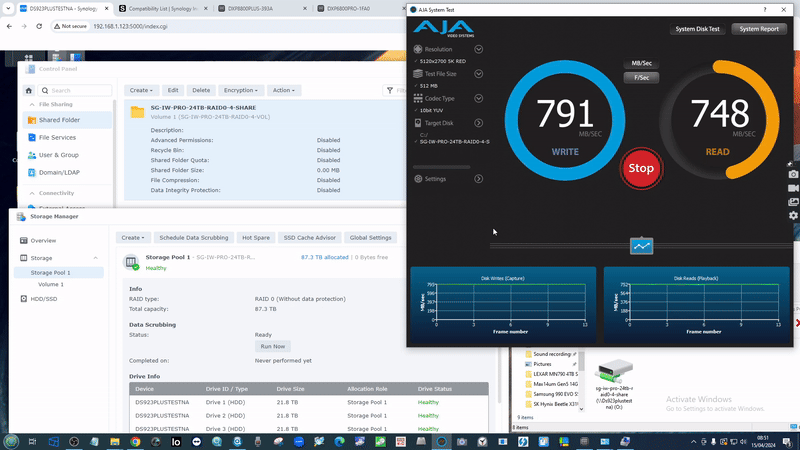
Noise Testing the Seagate Ironwolf Pro 24TB NAS Hard Drive

This is something that is often overlooked when users are getting excited about bigger and bigger HDDs entering the market and the Seagate Ironwolf Pro 24TB is no exception to this – NOISE! Because of the sheer scale of hardware that is getting packed into these larger capacity 3.5″ HDD casing and the more industrious hardware inside that needs to perform 24×7 durably, operational noise is unavoidable. Once you exceed around 8-10TB (HDD brand dependant), the increased platters and heavier duty actuator/arm mechanism needs to be a grat deal more reactive (due to the larger space that is needed to be covered ad-hoc. The Seagate ST2400NT002 24TB is a pretty spot-on example of this and although you are getting some great performance, it is achieved with a large amount of mechanical work under the bonnet. Now, if you are running a larger-scale data center/rackmount style setup, this is not going to be much of a barrier. As those kinds of server will have multiple fans and use horizontal pressure fan cooling – so they will be much louder than the drives! However, in more modest 4-8 Bay desktop NAS systems, its a different story, as these use smaller/quieter fans and alongside being more conductive of vibration, the noise of these drives in operation will be a great deal more obvious.
Here is an example of four Seagate Ironwolf Pro HDDs in a Synology DS923 4-Bay NAS, running an intense 4K IOPS benchmark on the drives (likely the LOUDEST THING you will ever hear, so this is not truly representative of idle/standby/low use):
If you want a better idea of typical operational noise and noise when booting the drive with the Seagate Ironwolf Pro 24TBs, watch the middle portion of the YouTube review HERE. Regardless, if you are sensitive to noise, will be in close proximity to the NAS device (direct 10GbE editing?) and will be running a smaller scale NAS system – then these new 24TB HDDs might not be quite your cup of tea!
Seagate Ironwolf Pro 24TB Hard Drive Review – Conclusion
There is no denying that Seagate certainly delivers on the prompted storage and performance that they have stated for the Ironwolf Pro 24TB NAS hard drive. This alongside fully tested and confirmed compatibility with Synology (though not by Synology themselves) devices means that you have a drive here that can turn any 4-Bay NAS into a staggering 96TB server in RAID 0 and 72TB RAID5 Storage data monster – let alone once you start thinking about rackmounts and hyperscale. The pricing of this 24TB is understandably high, but as always, when you start crunching down the ‘Price Per TB’, it ends up landing comfortably in the same region as other Pro class drives of a smaller capacity. As mentioned previously, I particularly appreciate that the workload discussion surrounding ‘Pro’ Class drives at 300TB/yr vs rapid HDD capacity growth is being addressed here with a 550TB/yr version to rival that of ‘Ent’ class drives – whatever the reason/motivation. With capacities getting higher and more ‘eggs being placed in baskets’, the durability of each individual drive in an array grows in importance, so the shift of these PRO class drives towards an ENTERPRISE class workload should be positively noted. The value of the Ironwolf Health Management tool is going to be something of debate and the inclusion of 3yrs data recovery services is a nice extra that (with any luck) few will need to use – but better to have them and not need them, than visa versa. As HDDs continue to increase in scale and Seagate (among other brands) continues to outline their plans to hit 50TB (so, halfway there with this one!) by the end of the decade, the Seagate Ironwolf Pro ST2400NT002 is another good example of an HDD that finds a sweet spot between price, durability and value. Just be aware that this is a drive designed for large-scale use and that means high operational noise and higher than typical power use than non-Pro and smaller cap drives!
| PROs of the Seagate Ironwolf Pro 24TB | CONs of the Seagate Ironwolf Pro 24TB |
|
|
 SUBSCRIBE TO OUR NEWSLETTER
SUBSCRIBE TO OUR NEWSLETTER 
[contact-form-7]
 Join Inner Circle
Join Inner Circle Get an alert every time something gets added to this specific article!
 Subscribe
Subscribe
This description contains links to Amazon. These links will take you to some of the products mentioned in today's content. As an Amazon Associate, I earn from qualifying purchases. Visit the NASCompares Deal Finder to find the best place to buy this device in your region, based on Service, Support and Reputation - Just Search for your NAS Drive in the Box Below
Need Advice on Data Storage from an Expert?
Finally, for free advice about your setup, just leave a message in the comments below here at NASCompares.com and we will get back to you. Need Help?
Where possible (and where appropriate) please provide as much information about your requirements, as then I can arrange the best answer and solution to your needs. Do not worry about your e-mail address being required, it will NOT be used in a mailing list and will NOT be used in any way other than to respond to your enquiry.
[contact-form-7]
Need Help?
Where possible (and where appropriate) please provide as much information about your requirements, as then I can arrange the best answer and solution to your needs. Do not worry about your e-mail address being required, it will NOT be used in a mailing list and will NOT be used in any way other than to respond to your enquiry.
[contact-form-7]
 Ko-fi or old school Paypal. Thanks!To find out more about how to support this advice service check HEREIf you need to fix or configure a NAS, check Fiver
Have you thought about helping others with your knowledge? Find Instructions Here
Ko-fi or old school Paypal. Thanks!To find out more about how to support this advice service check HEREIf you need to fix or configure a NAS, check Fiver
Have you thought about helping others with your knowledge? Find Instructions Here

|
 |




